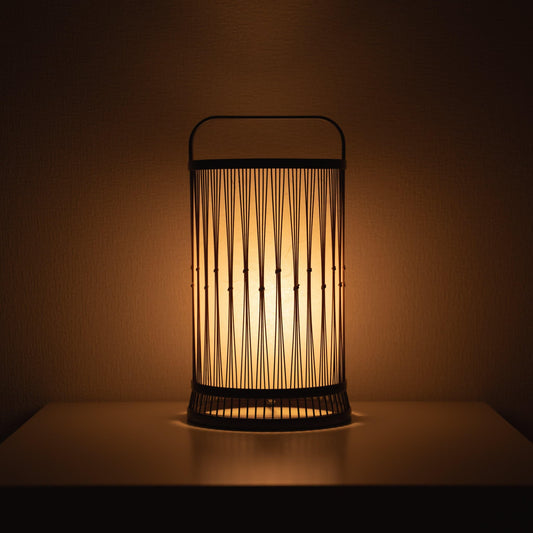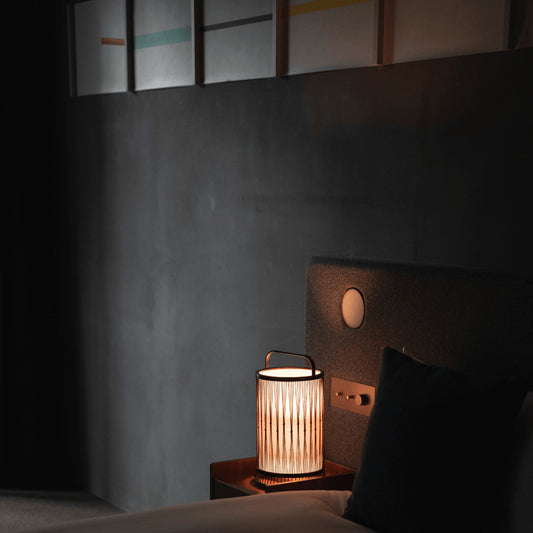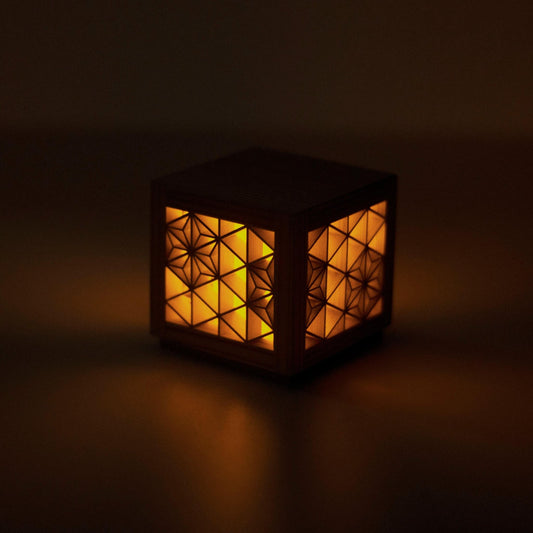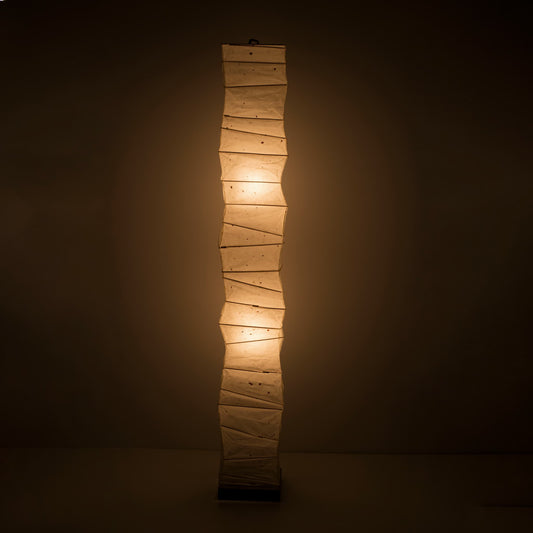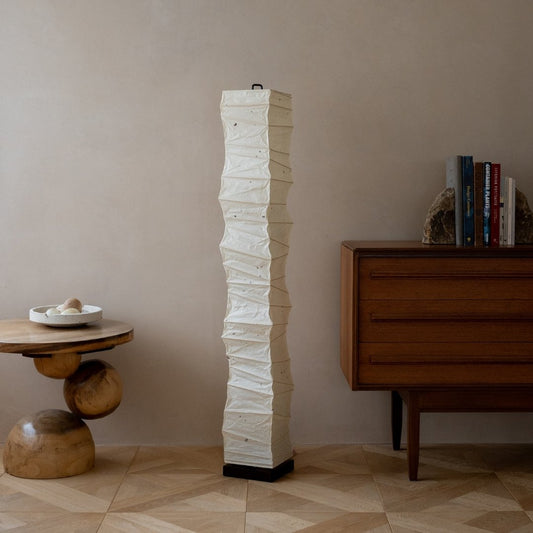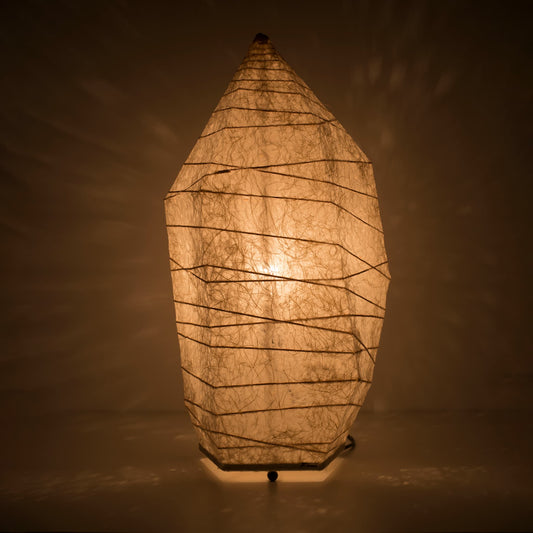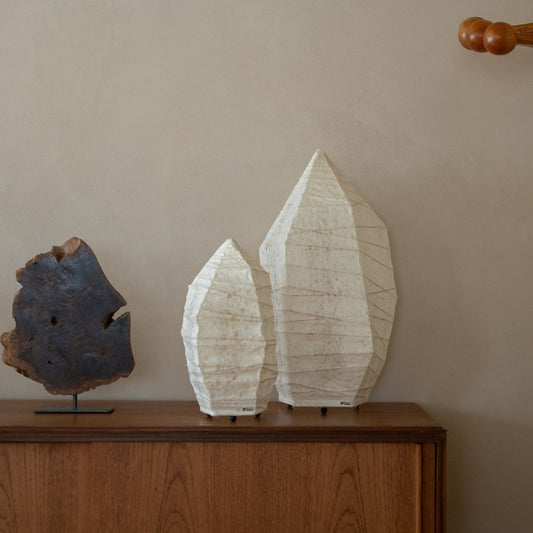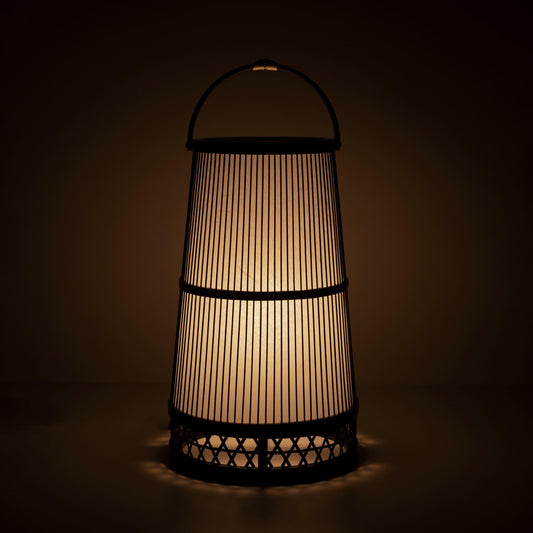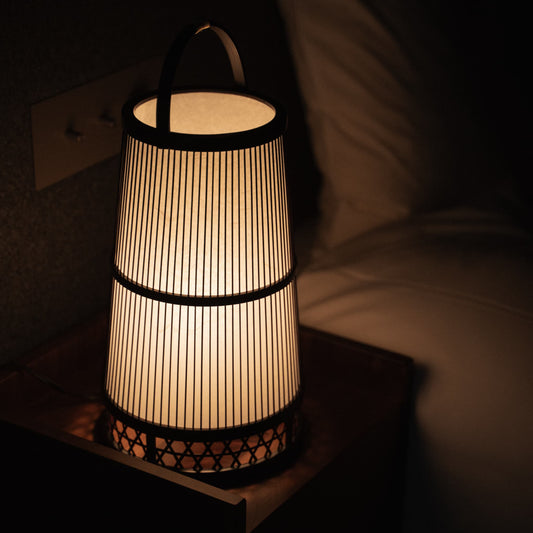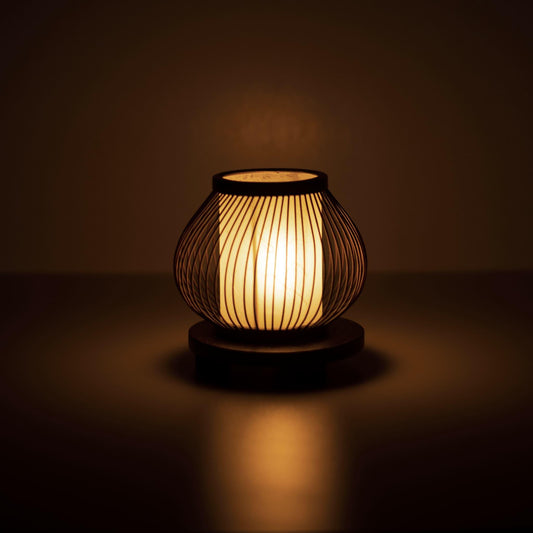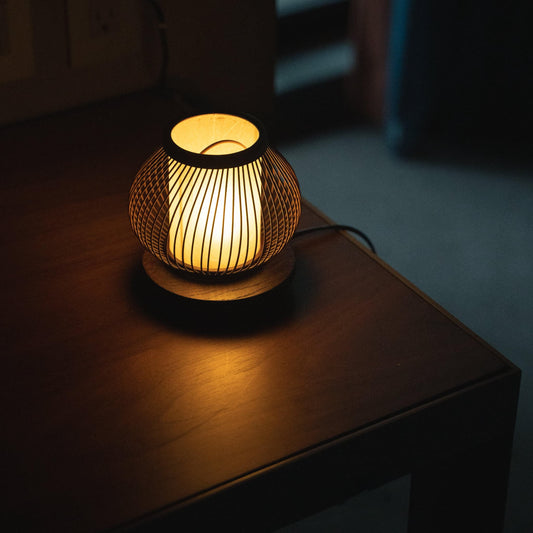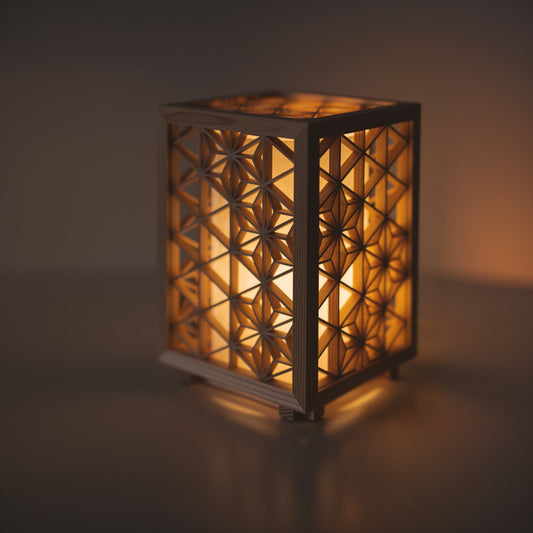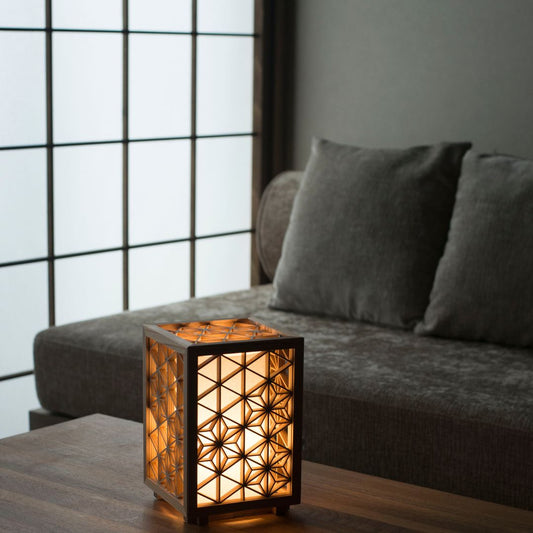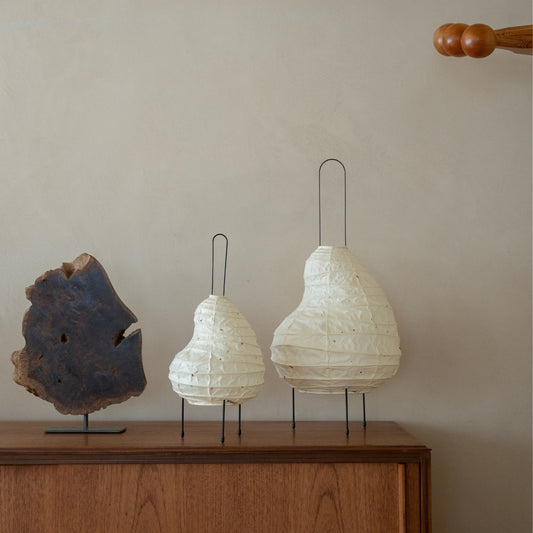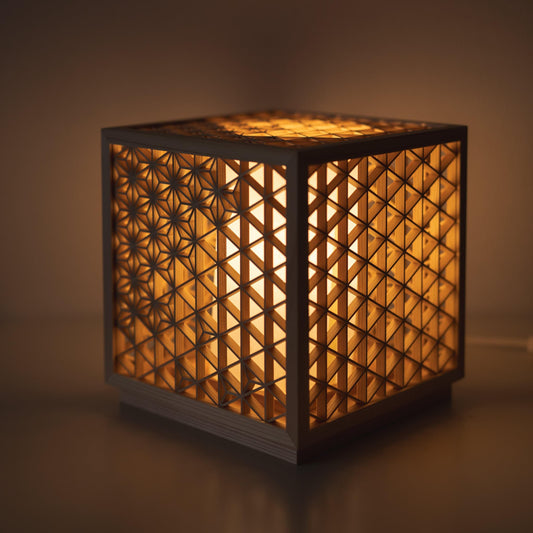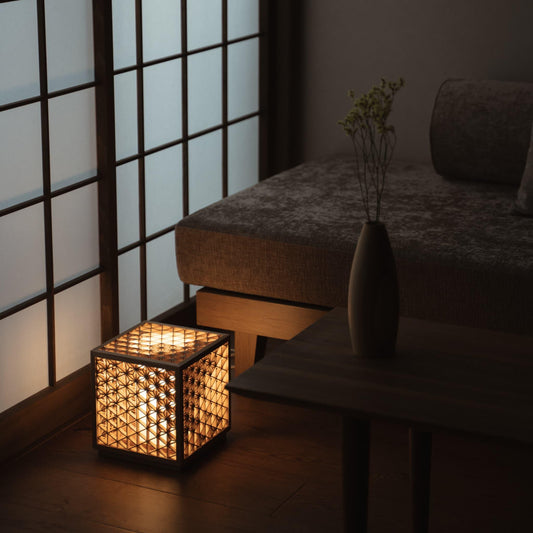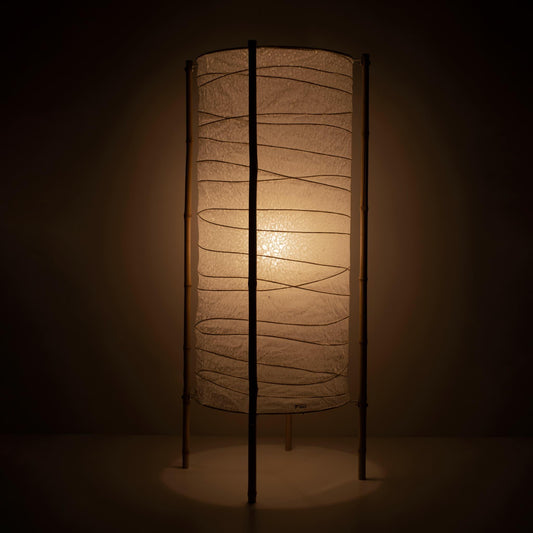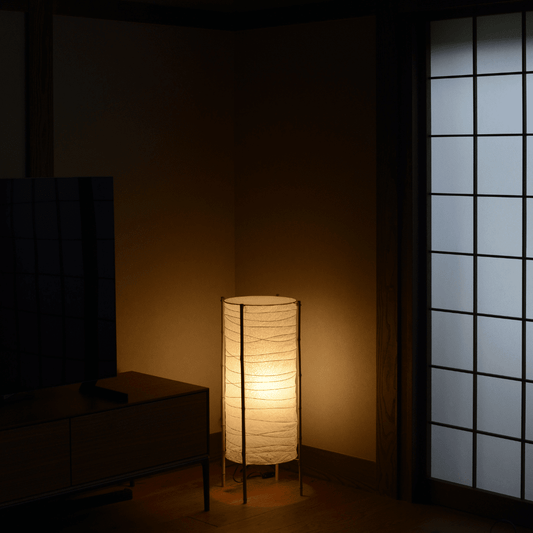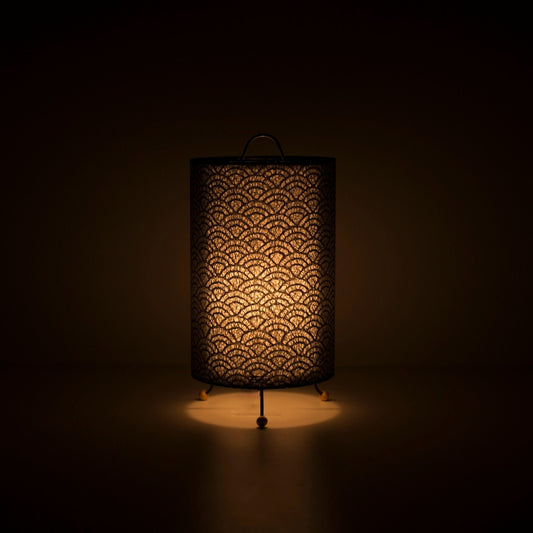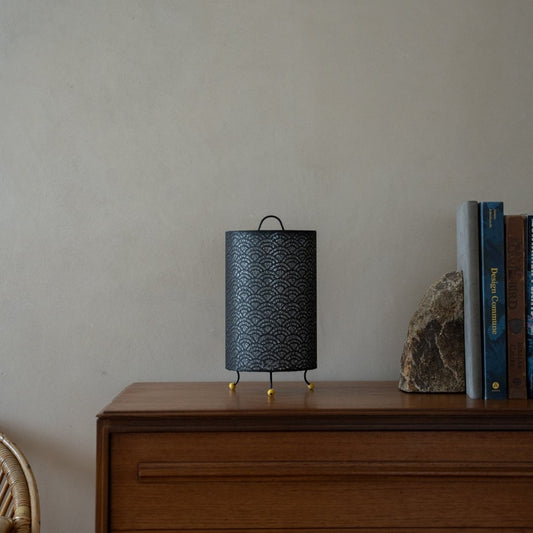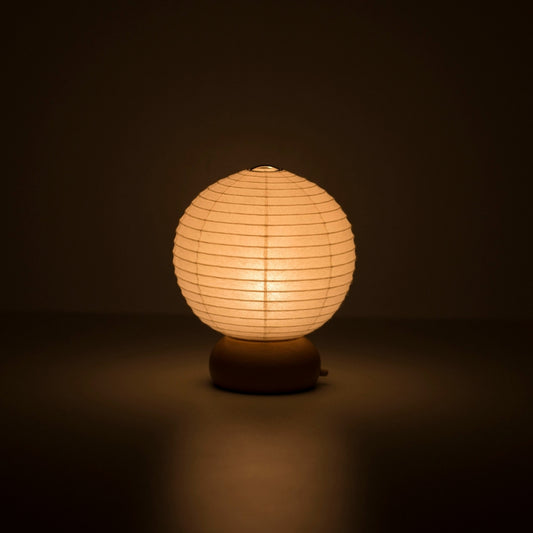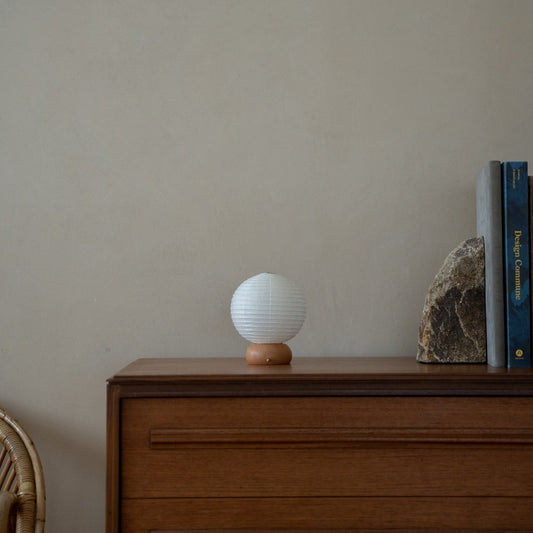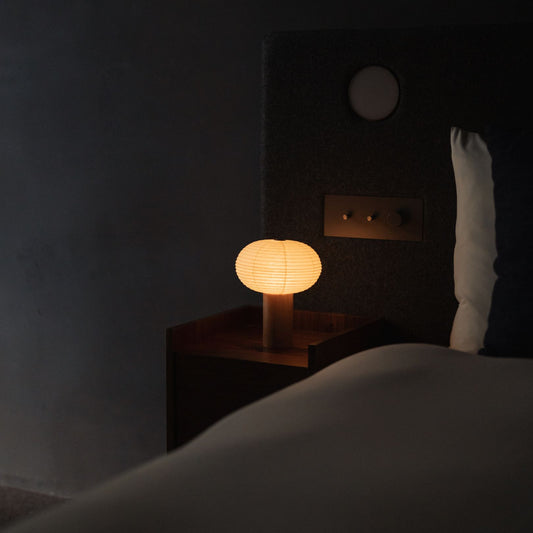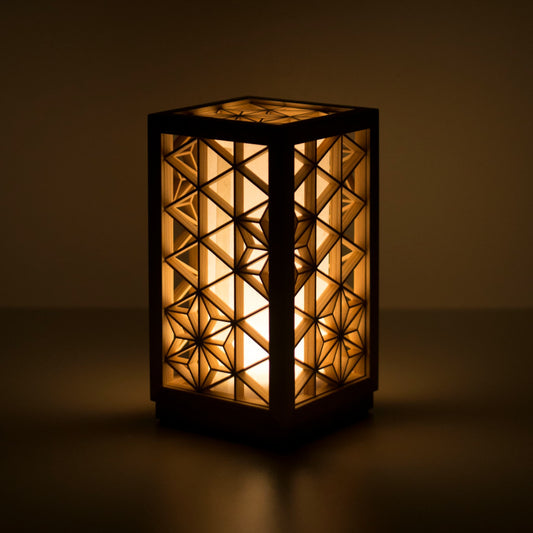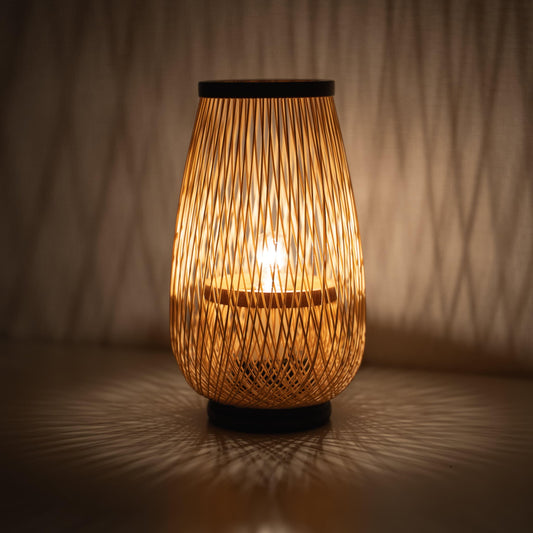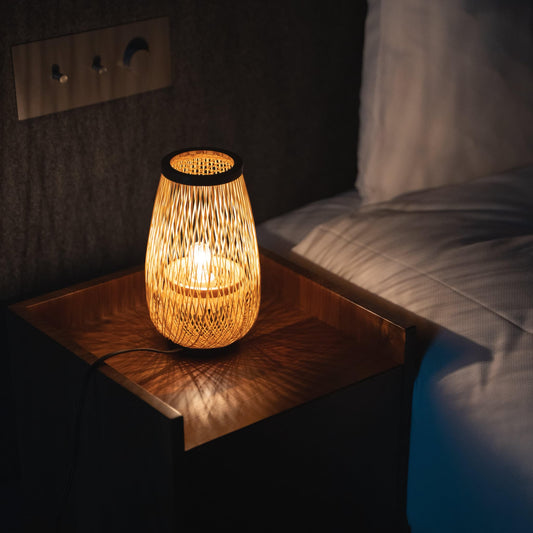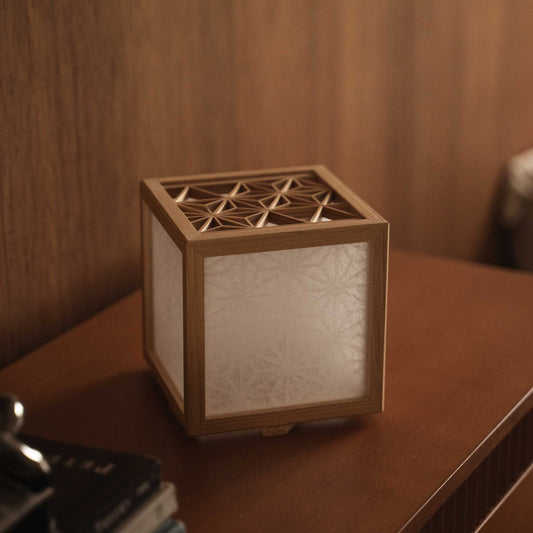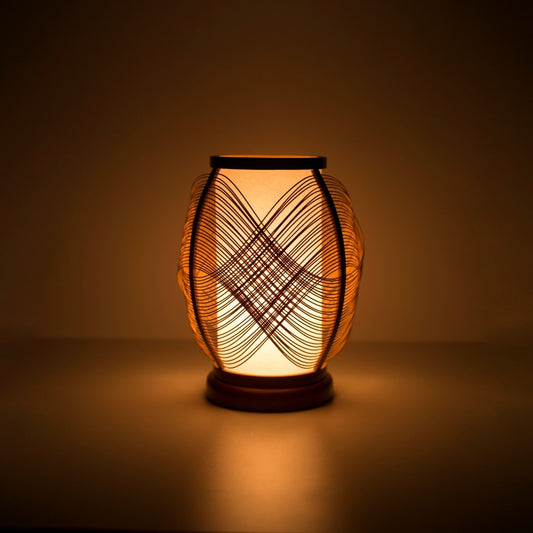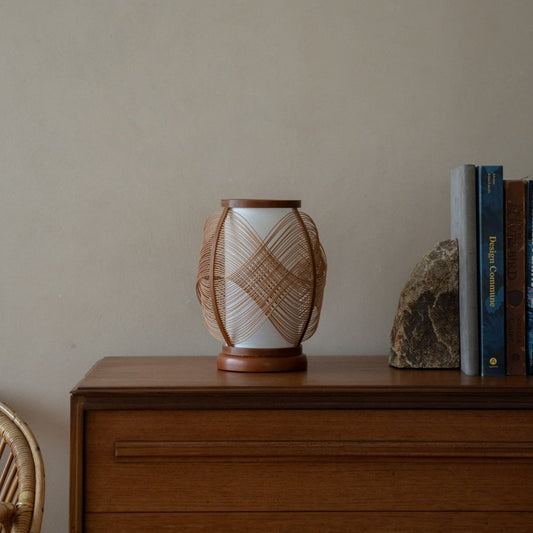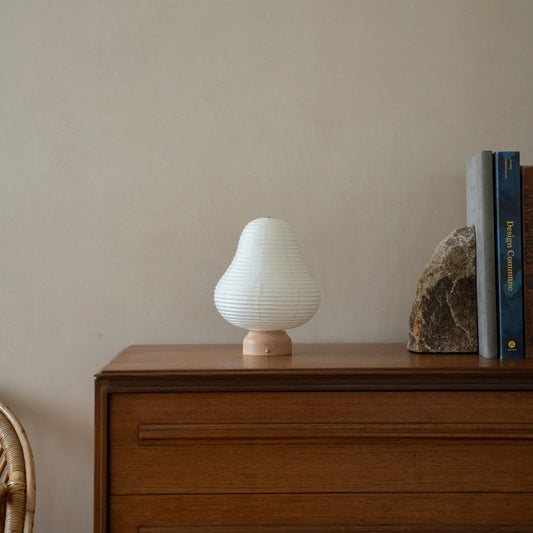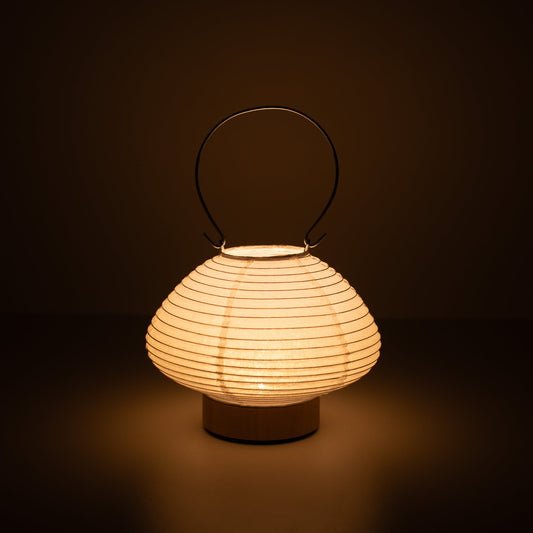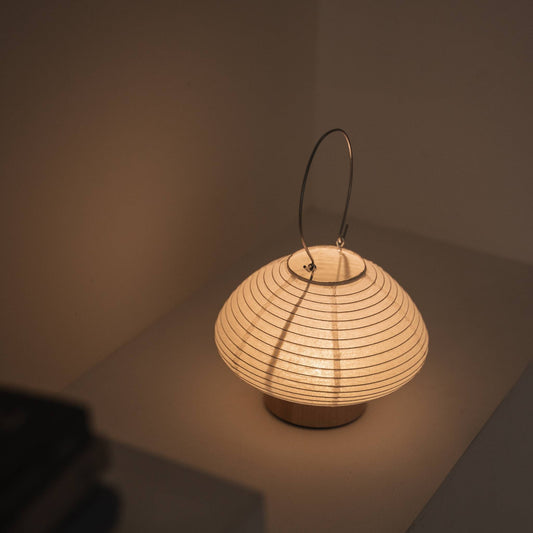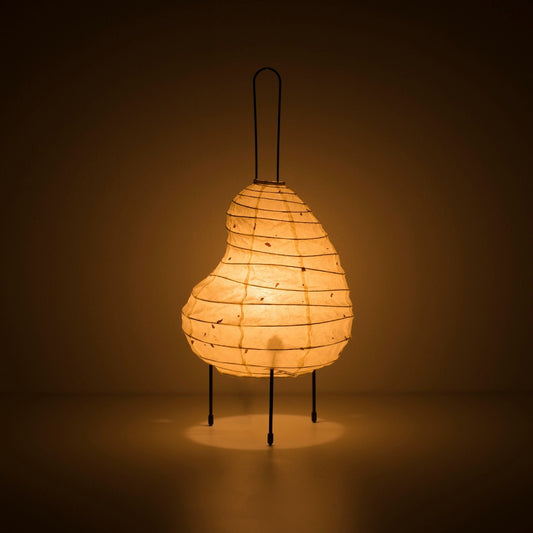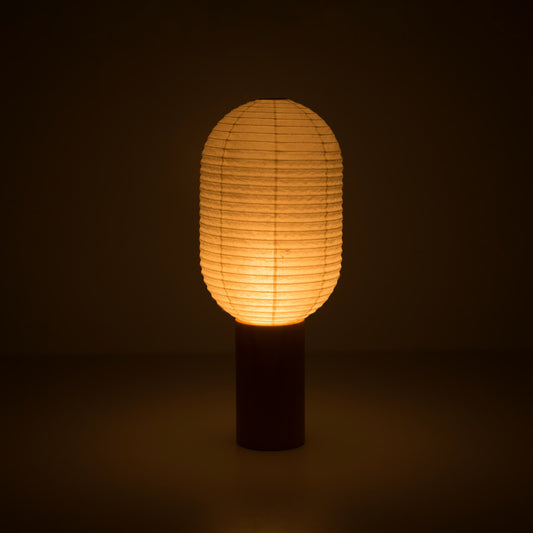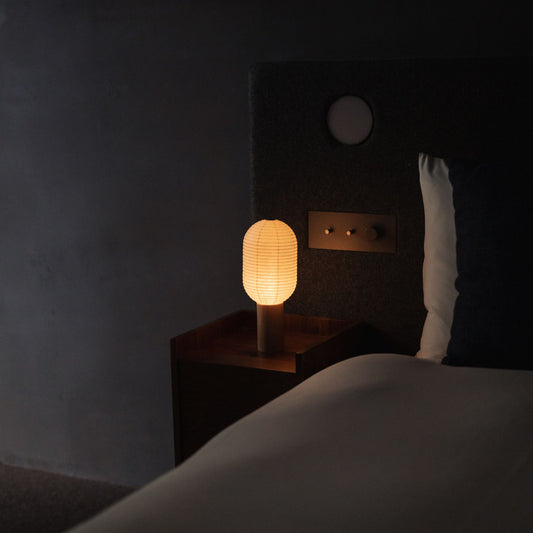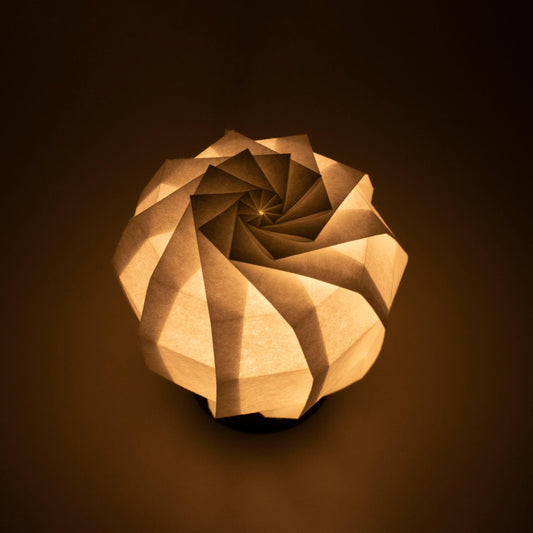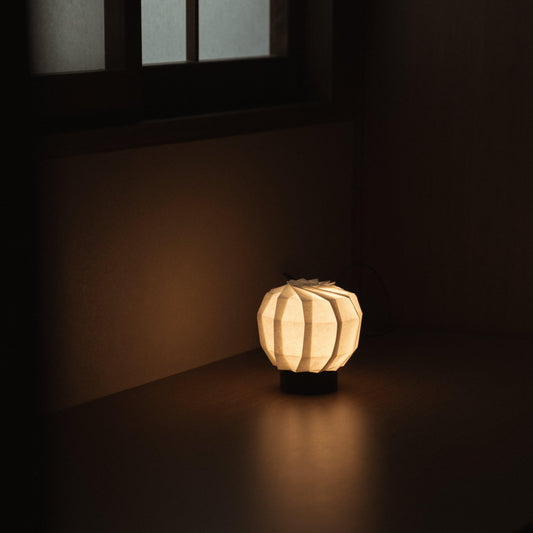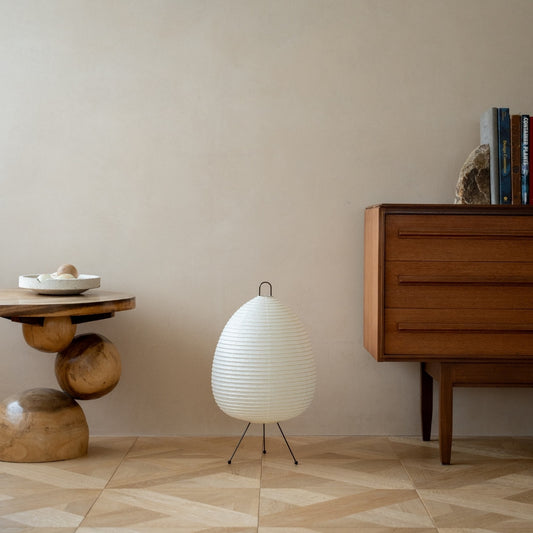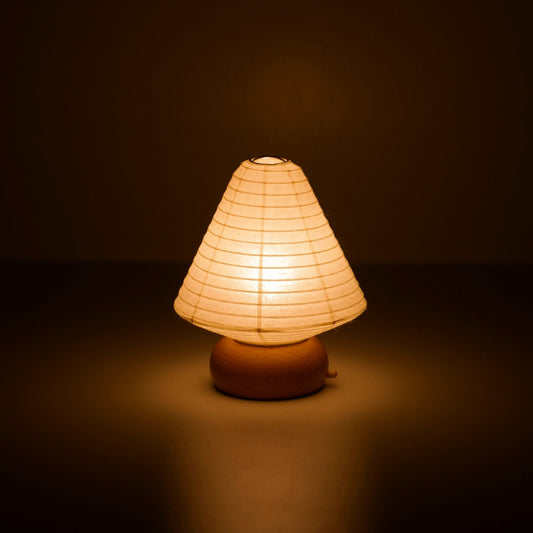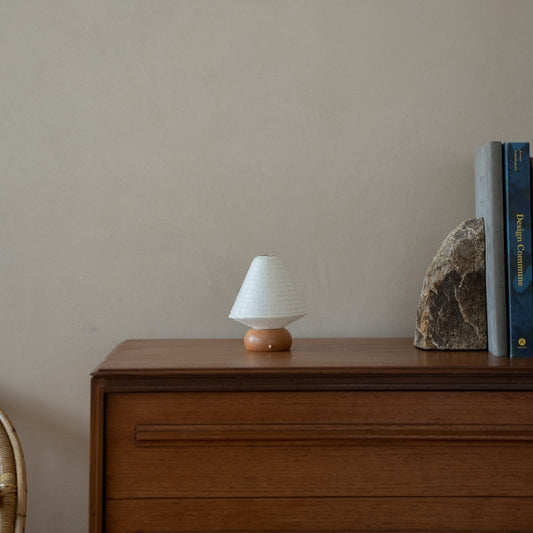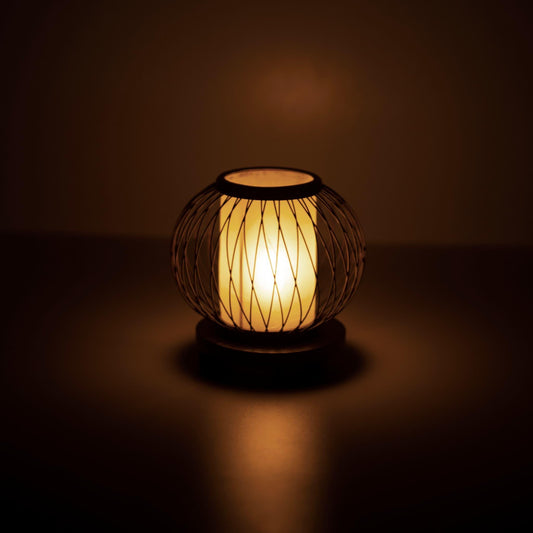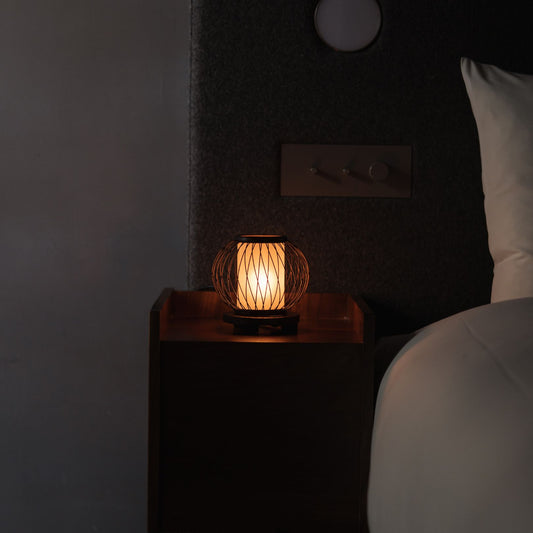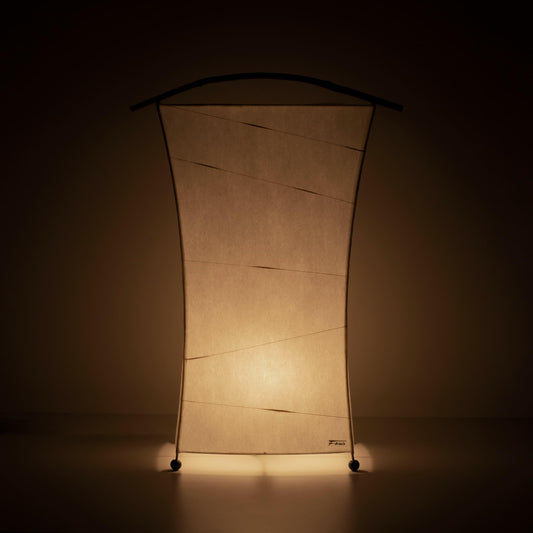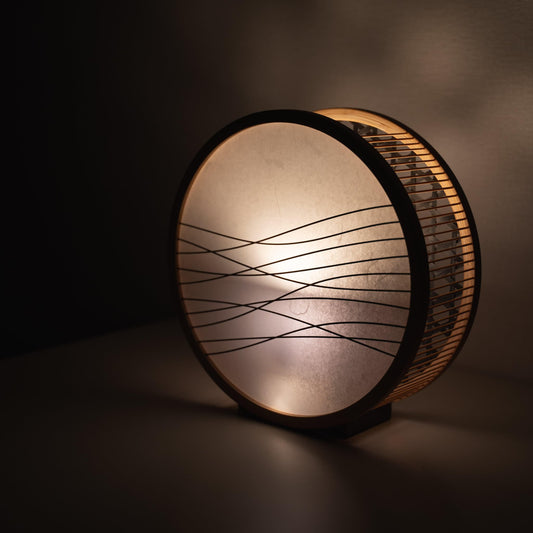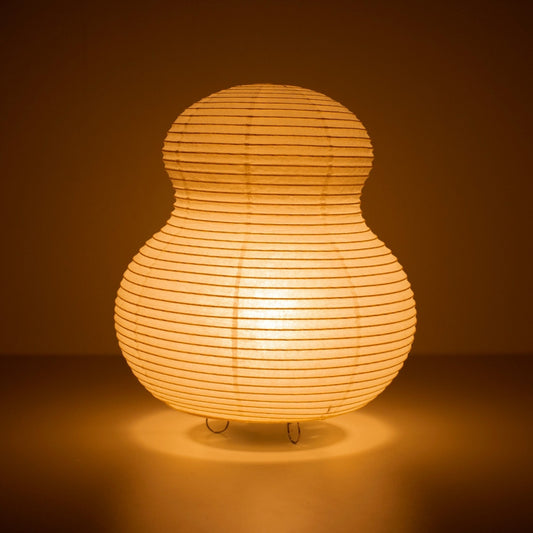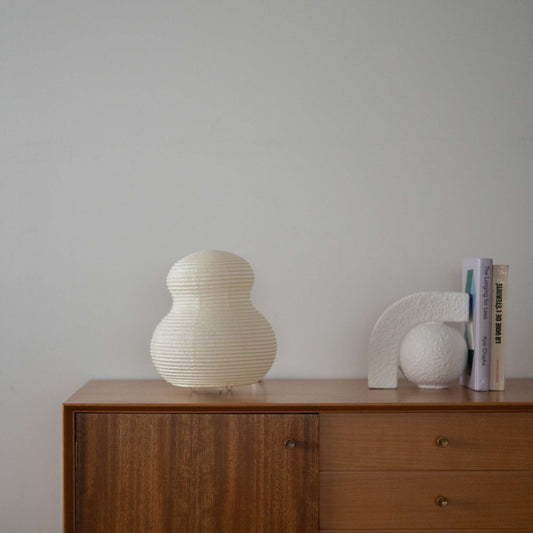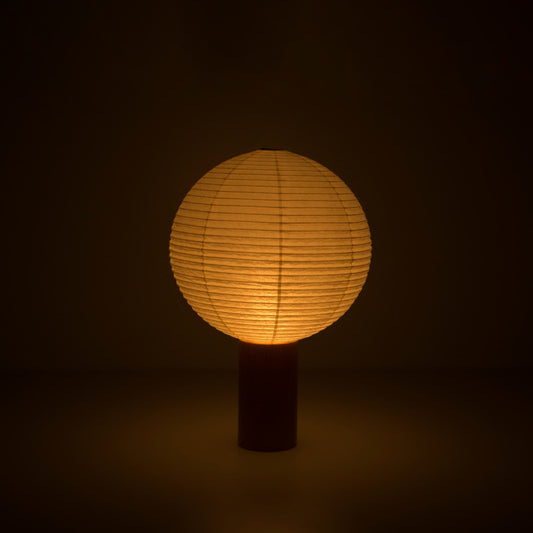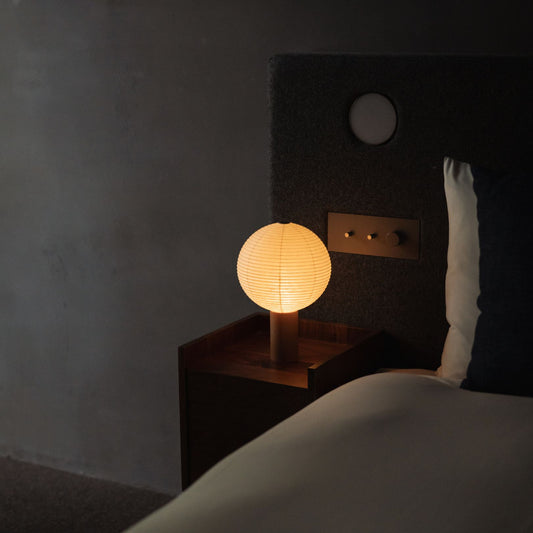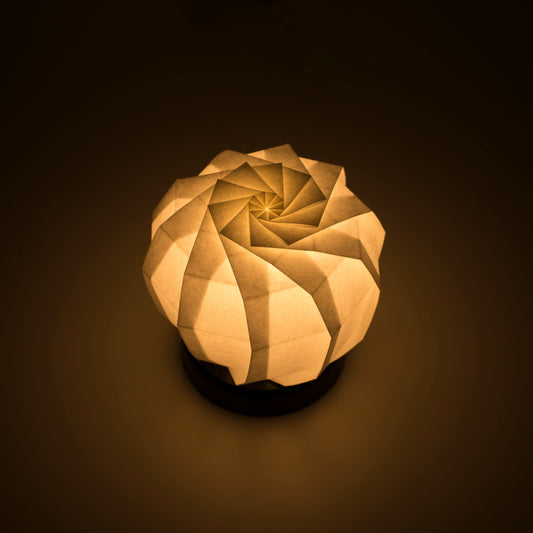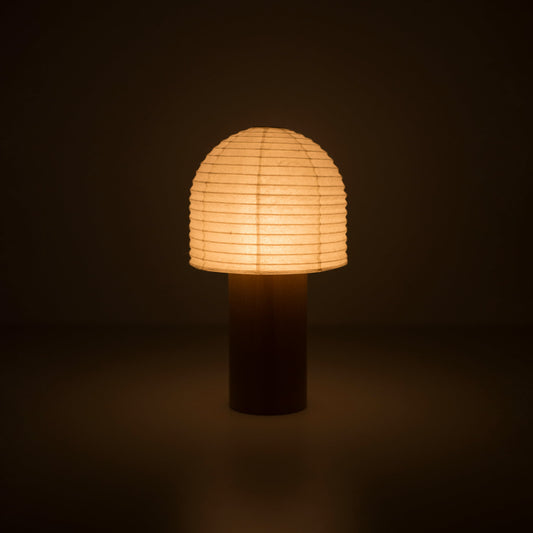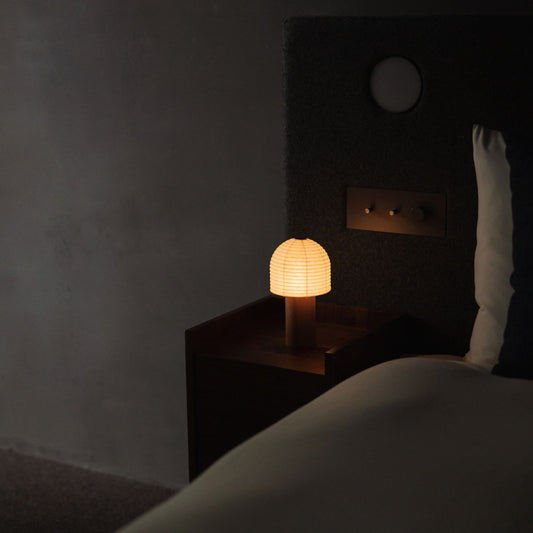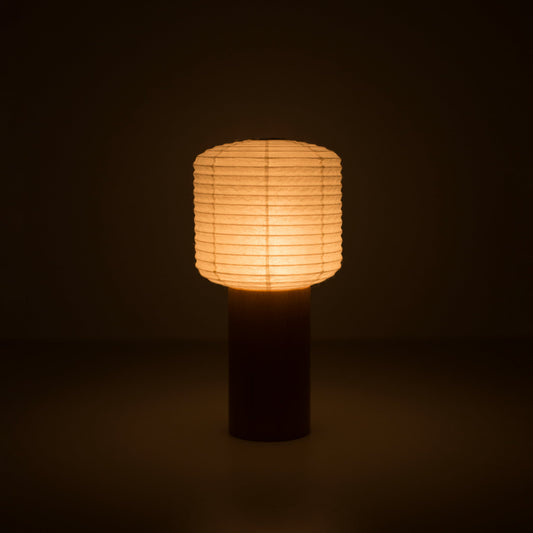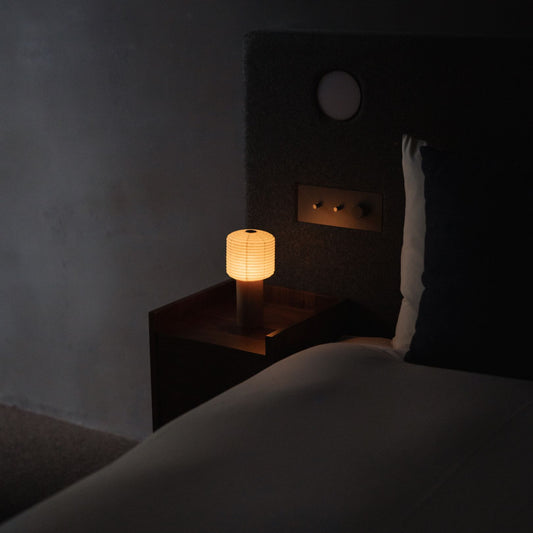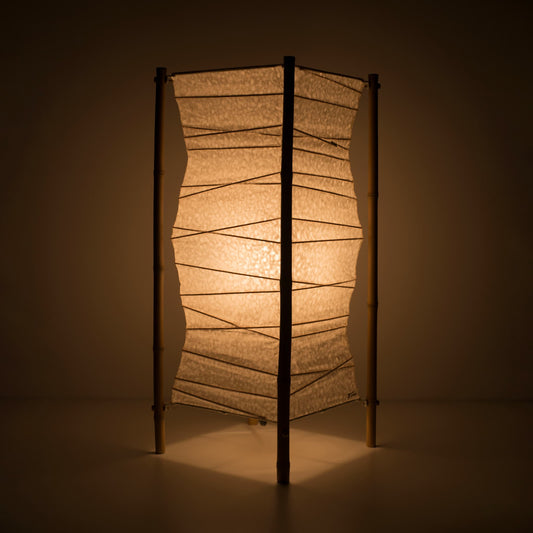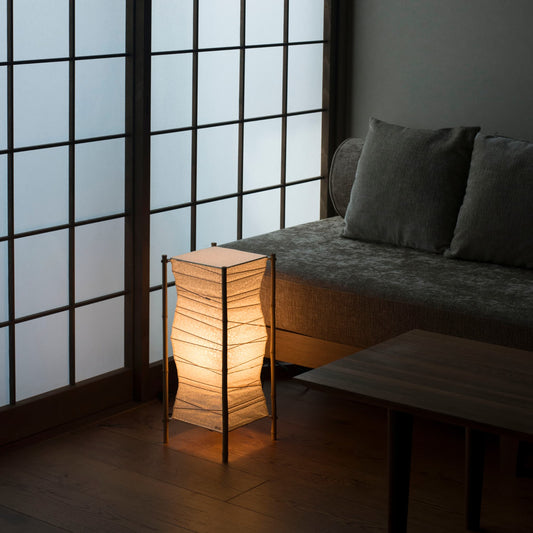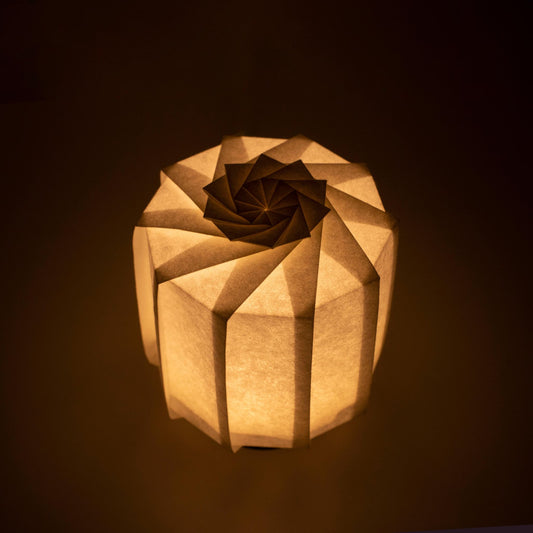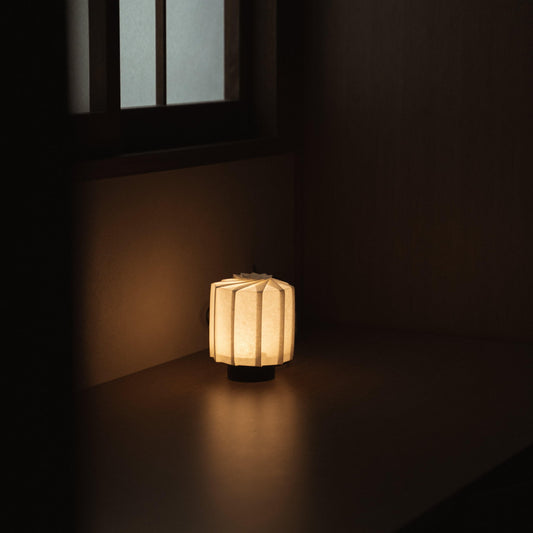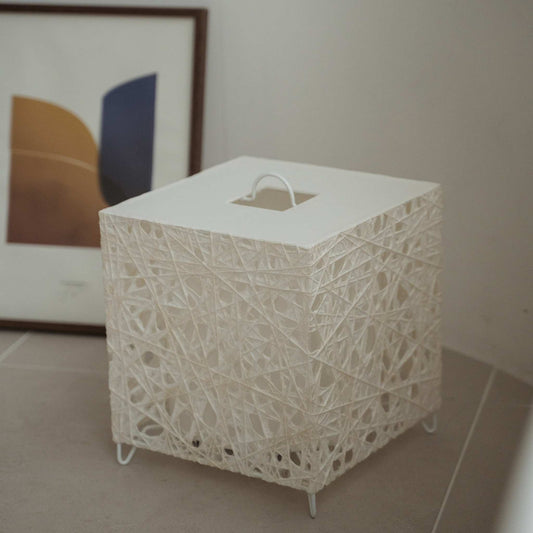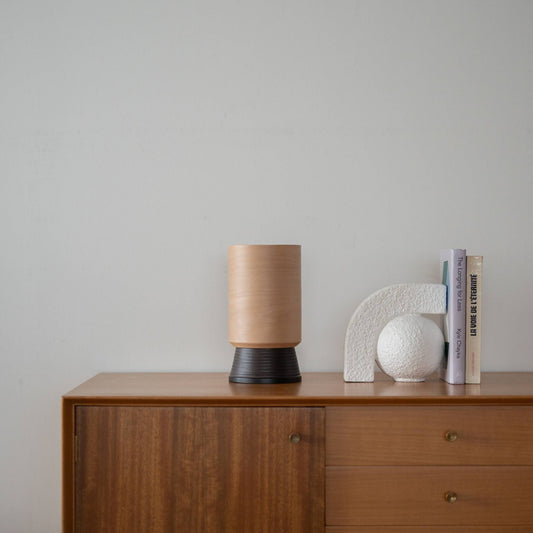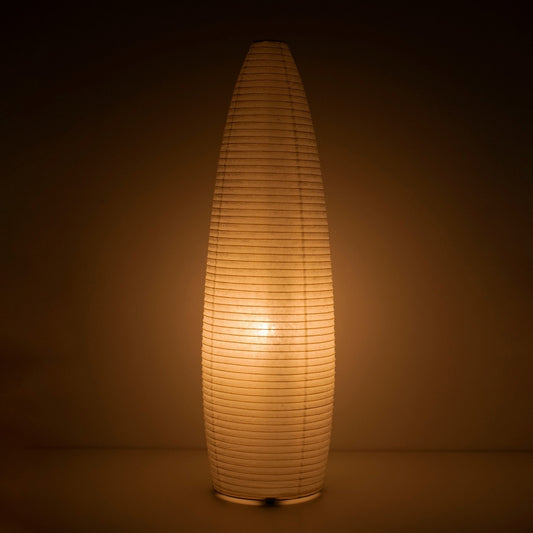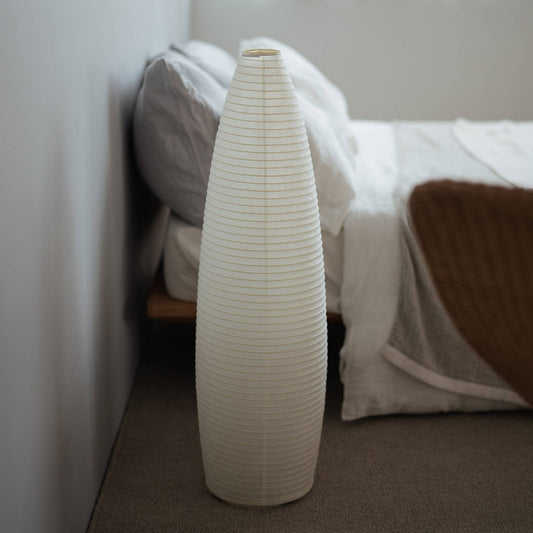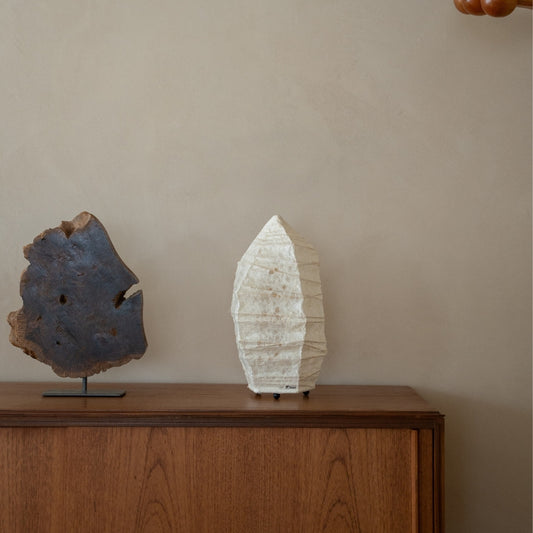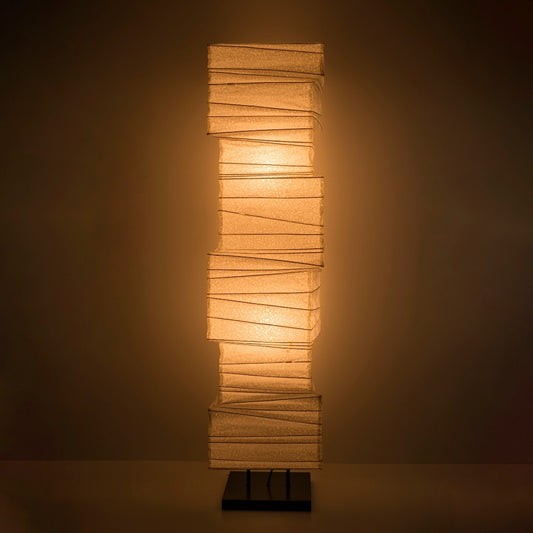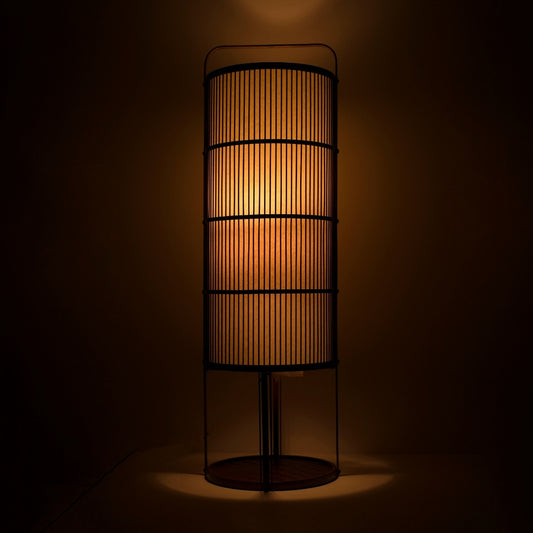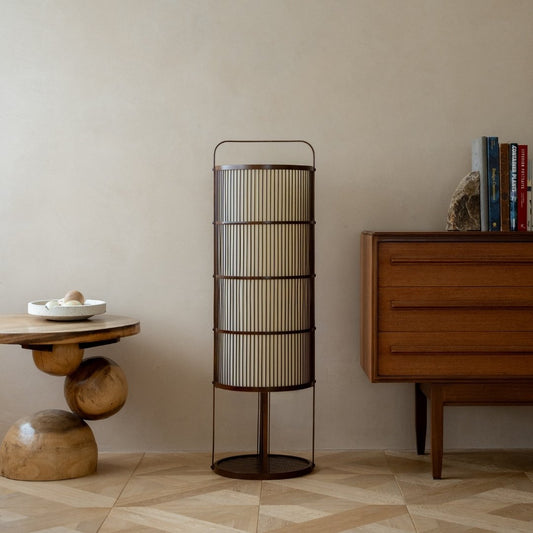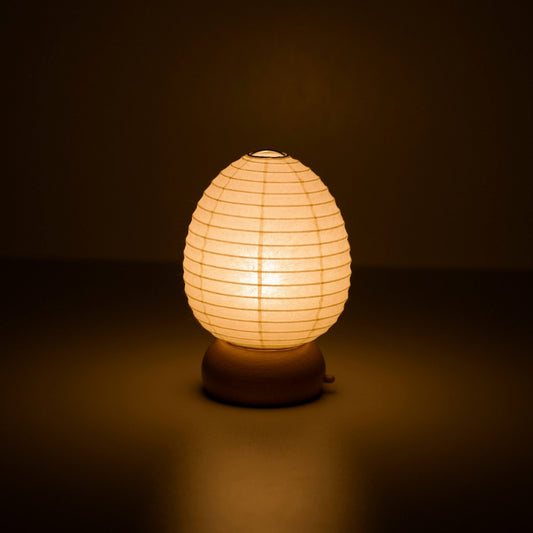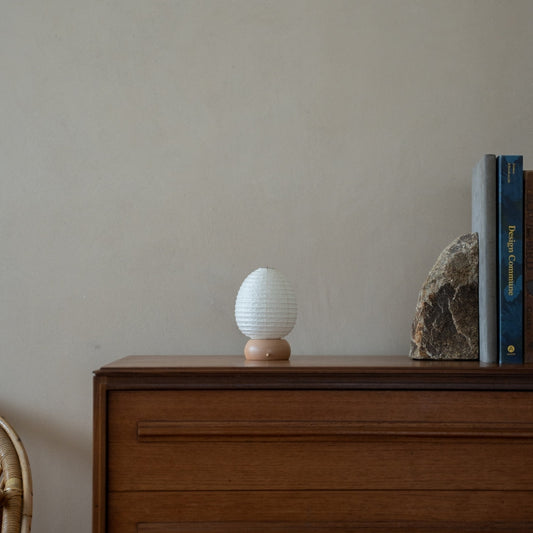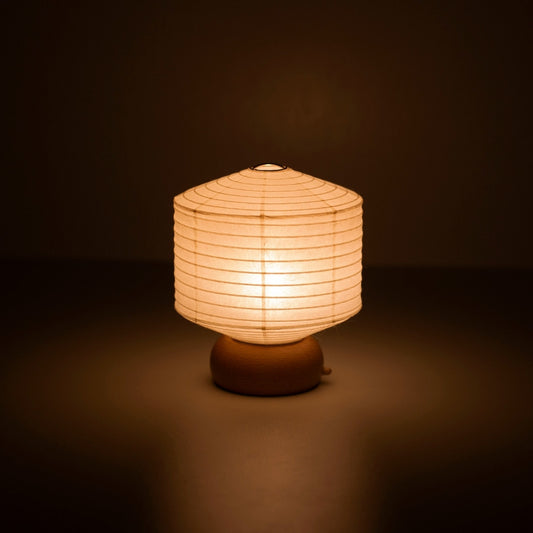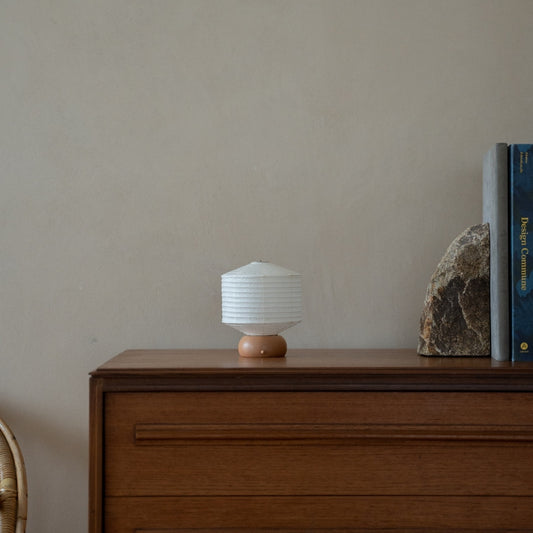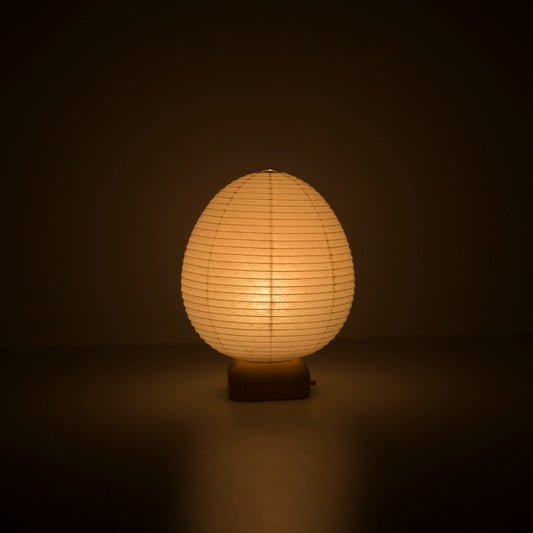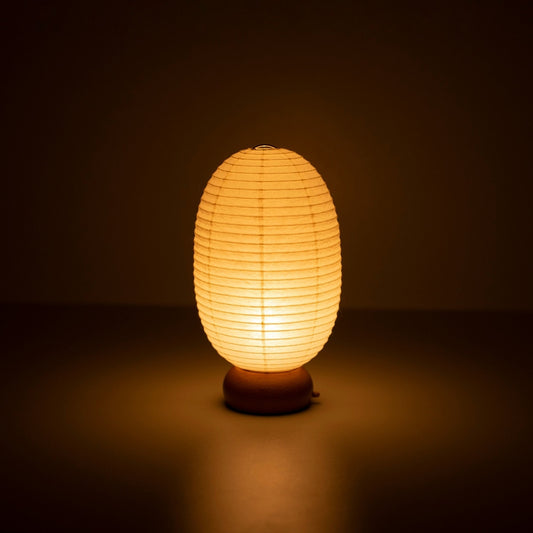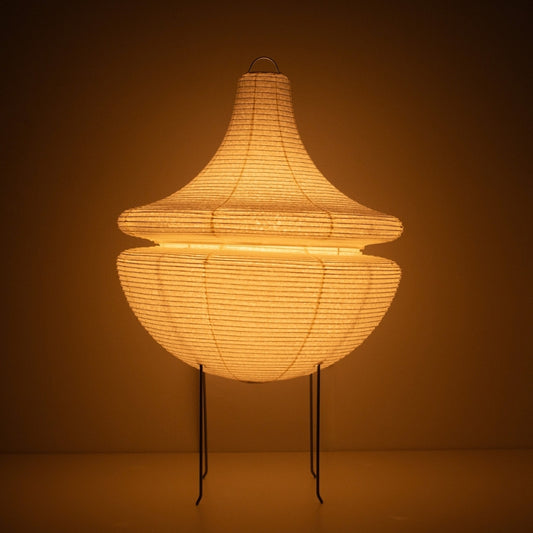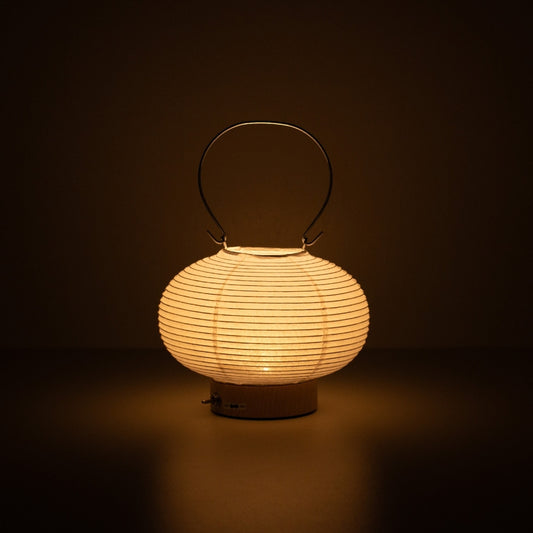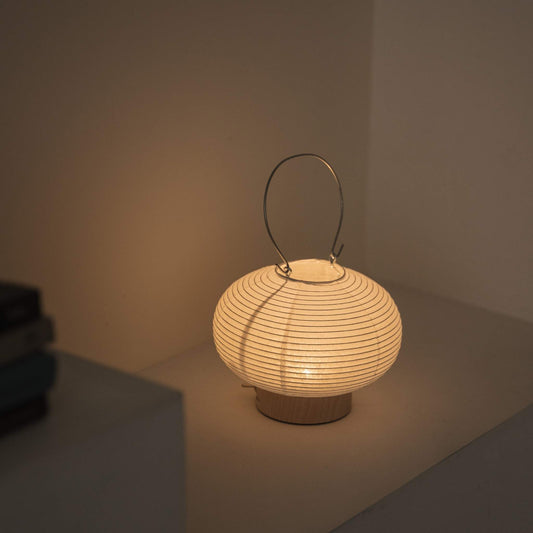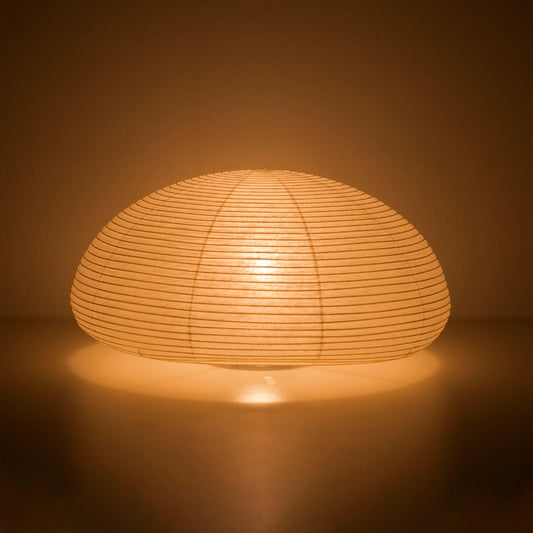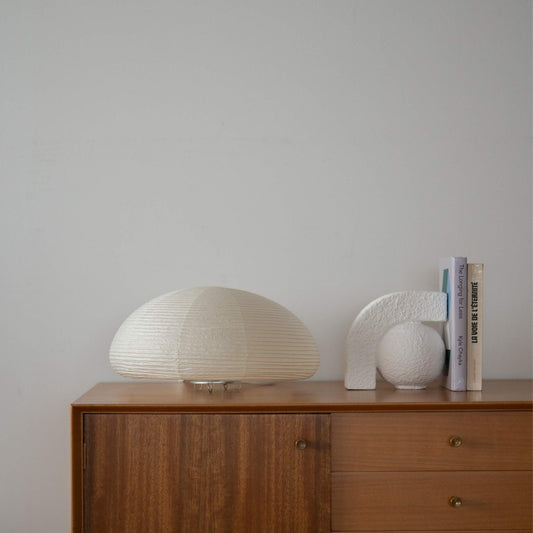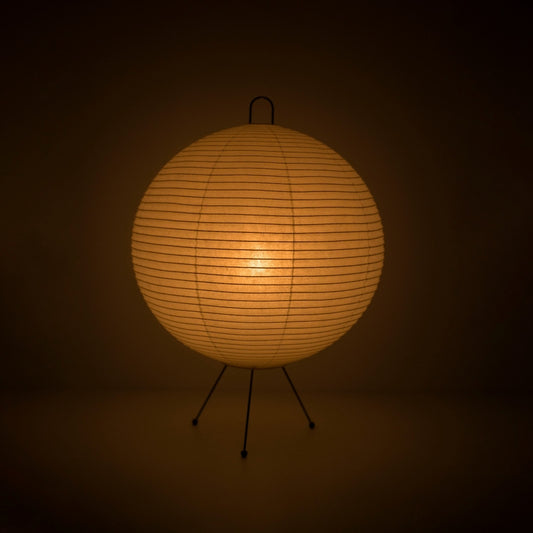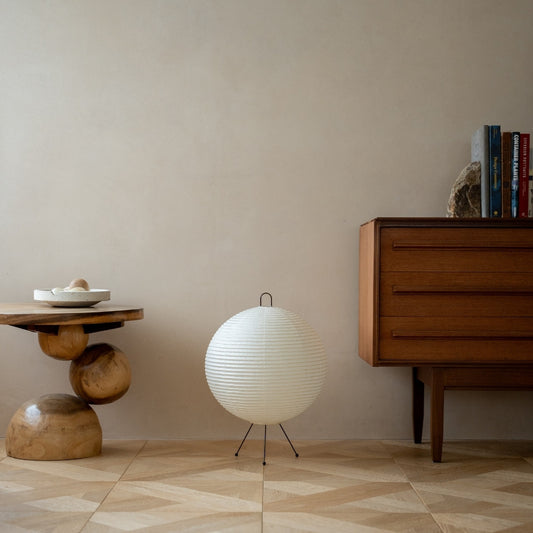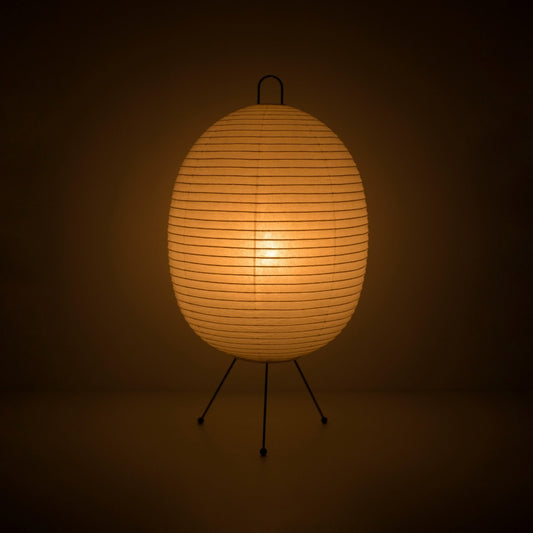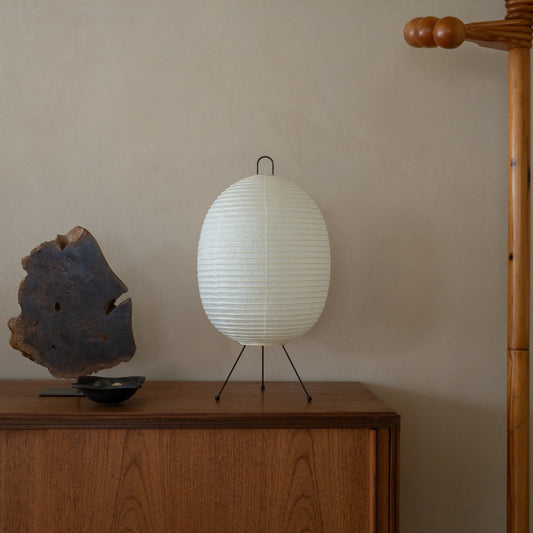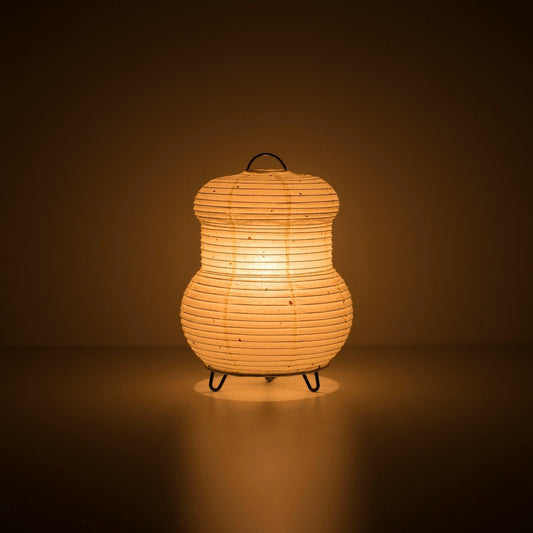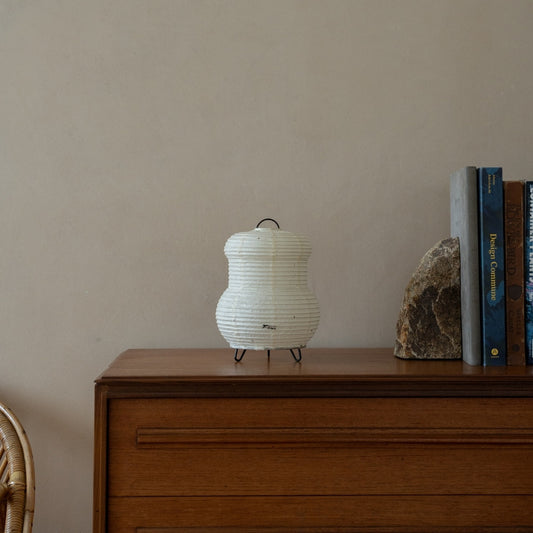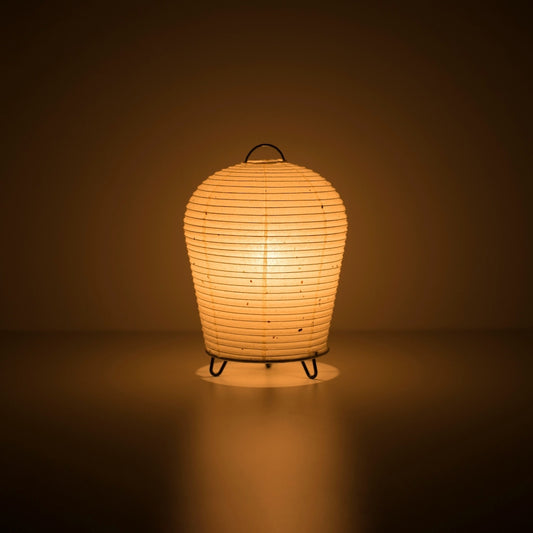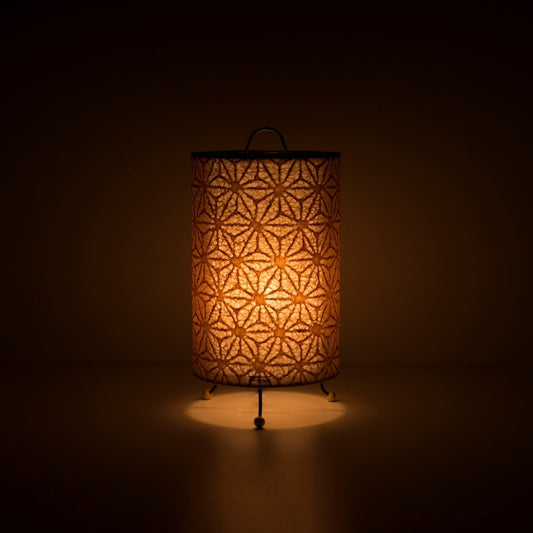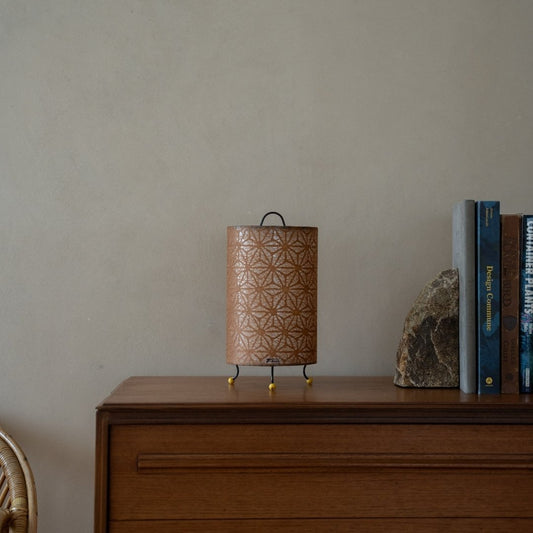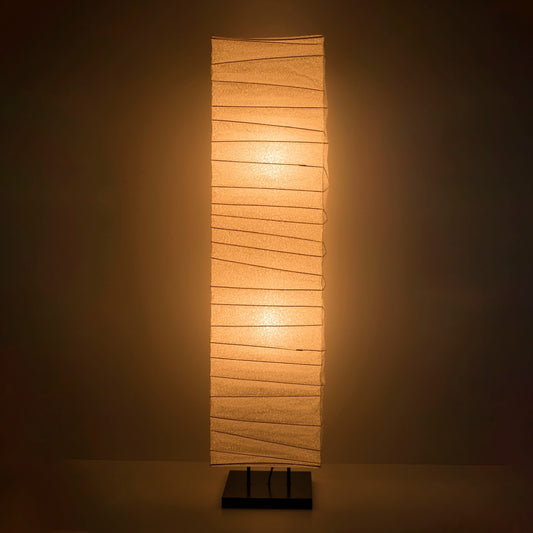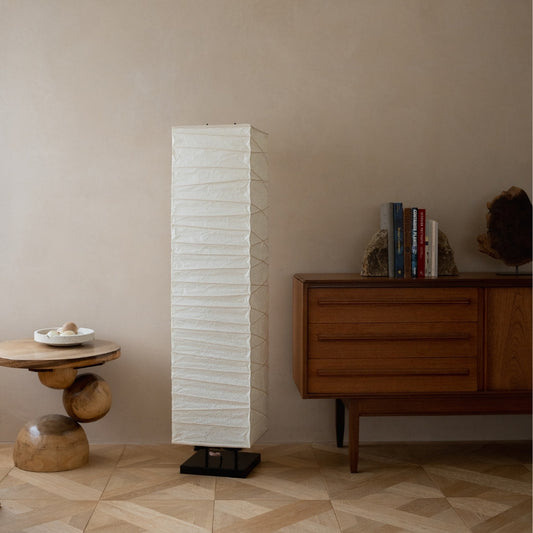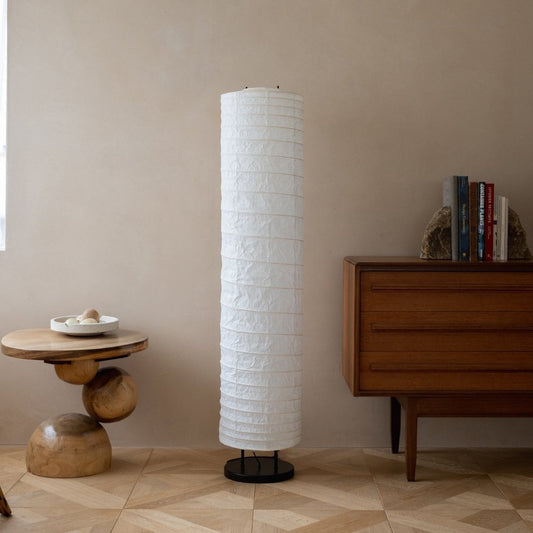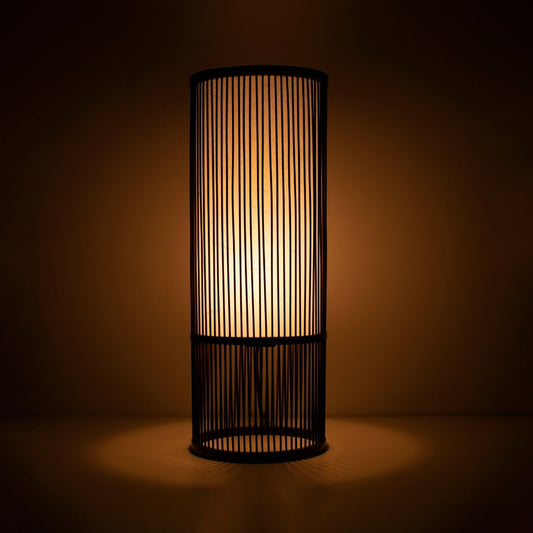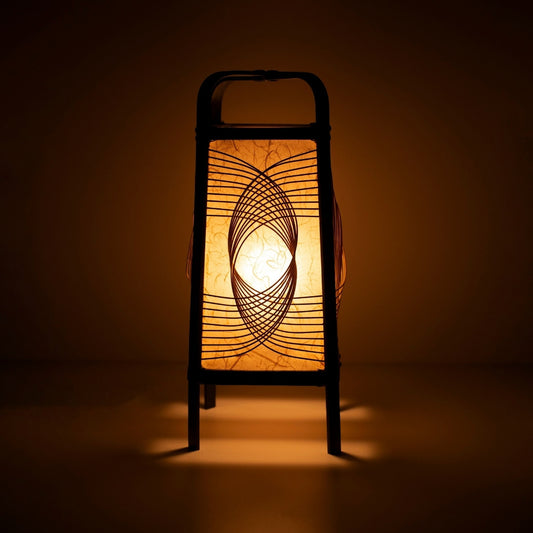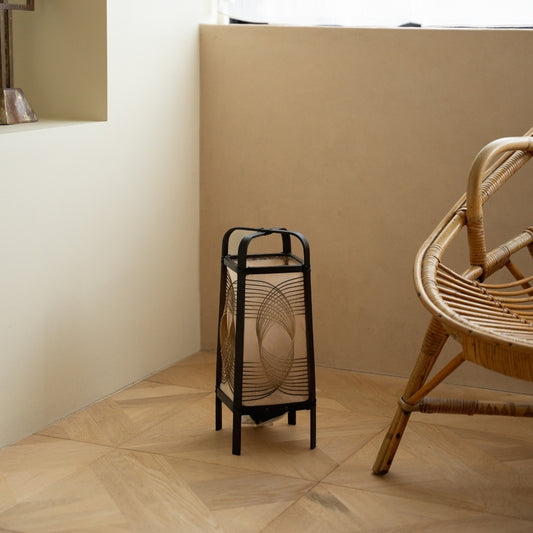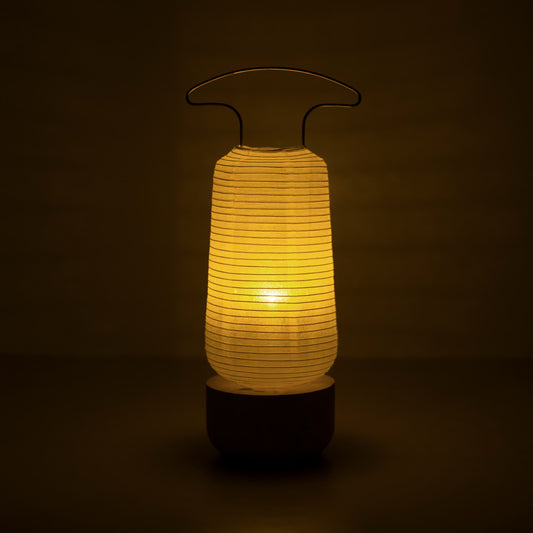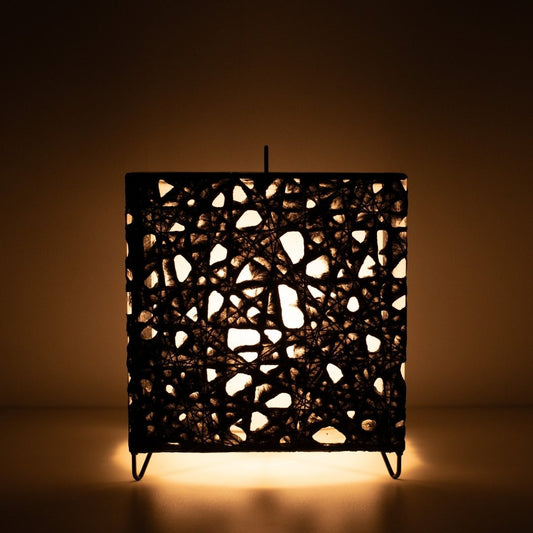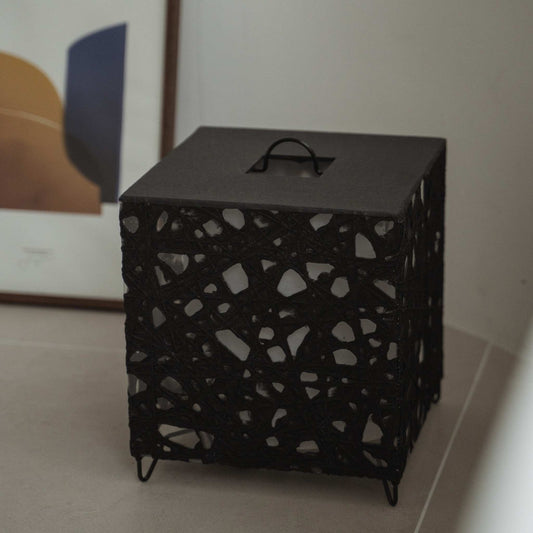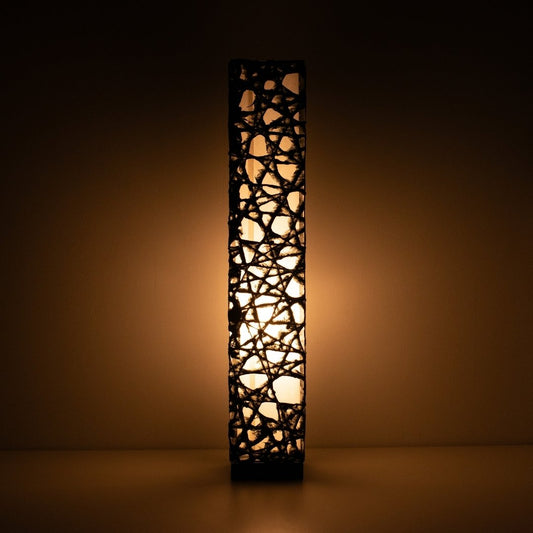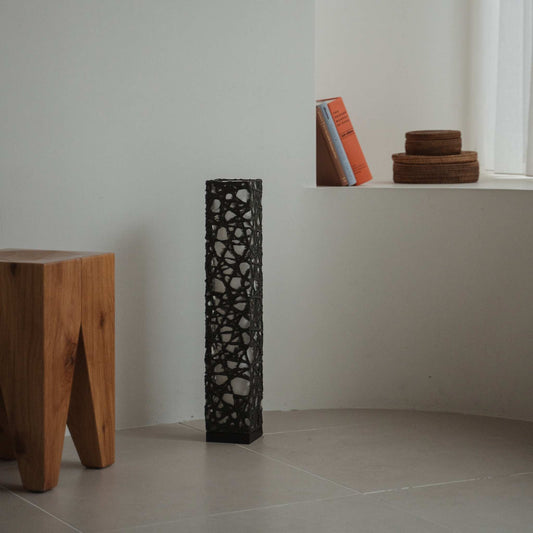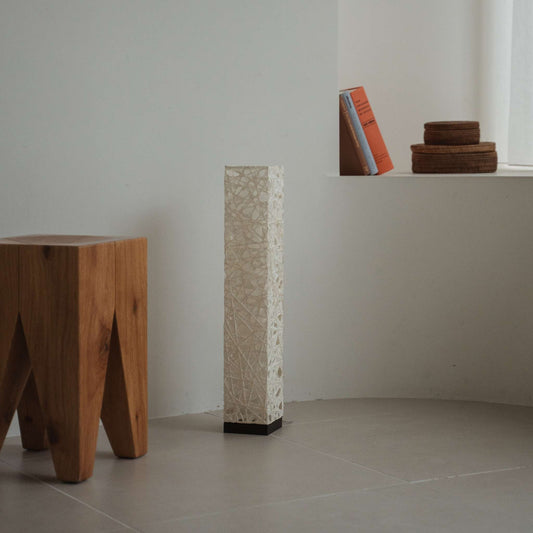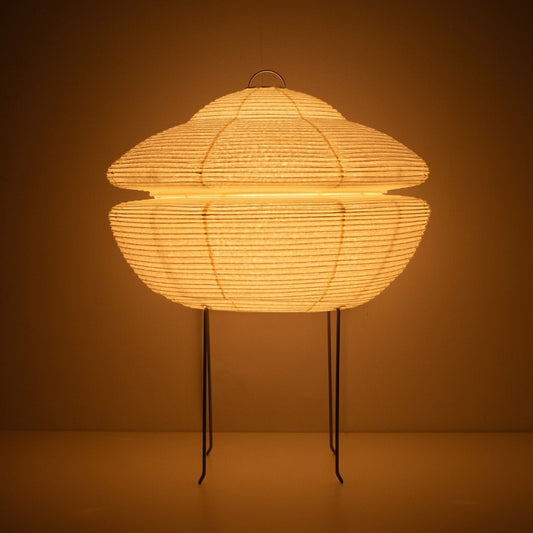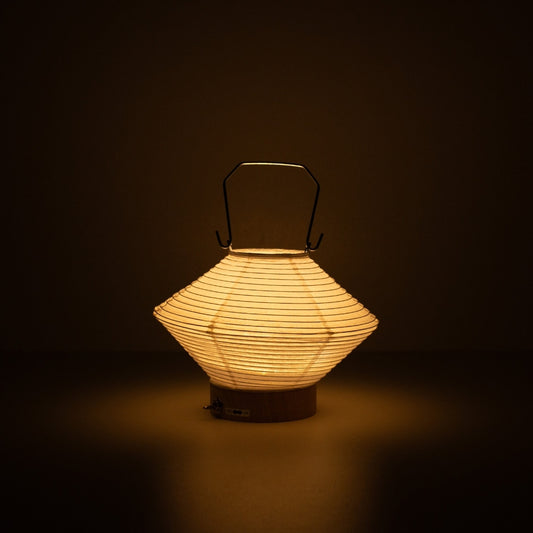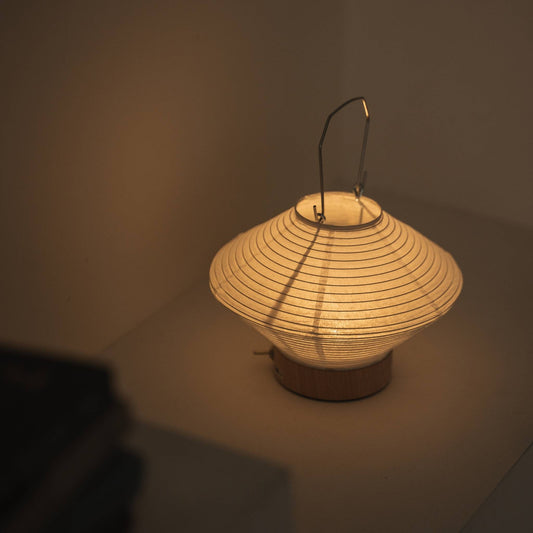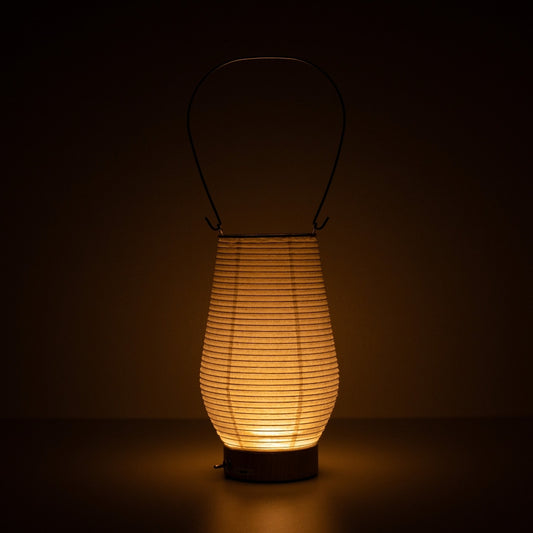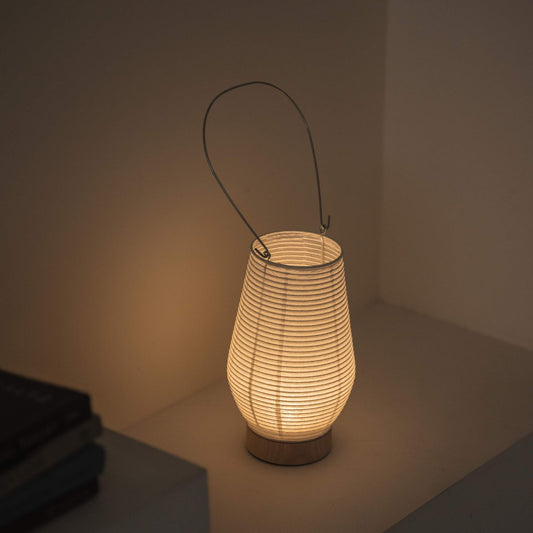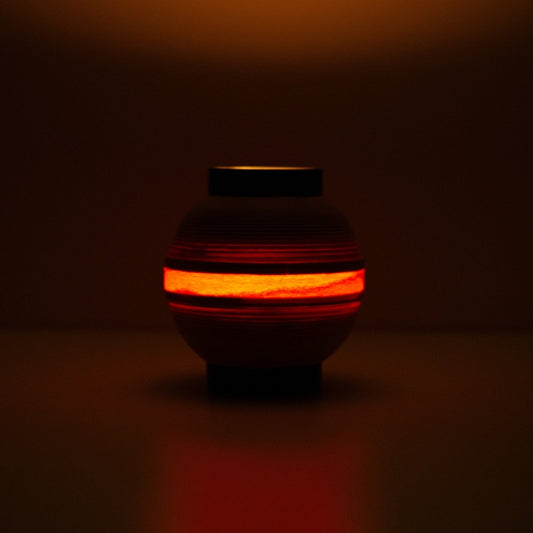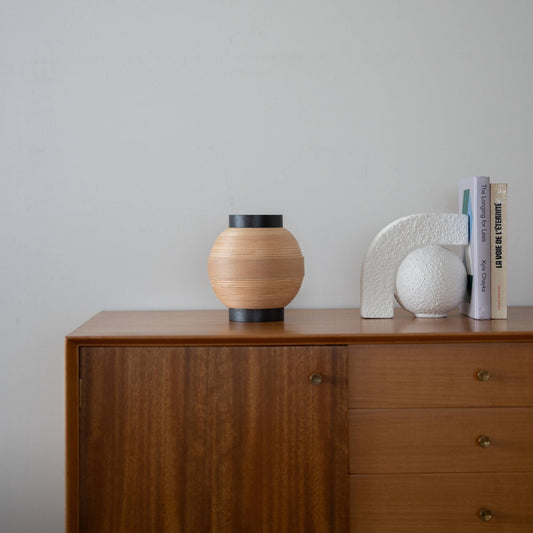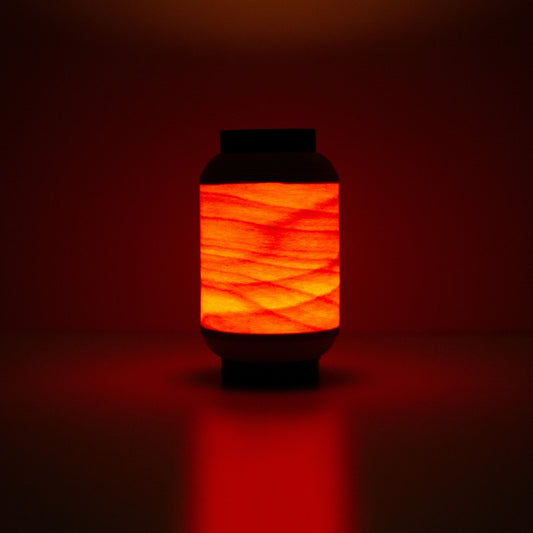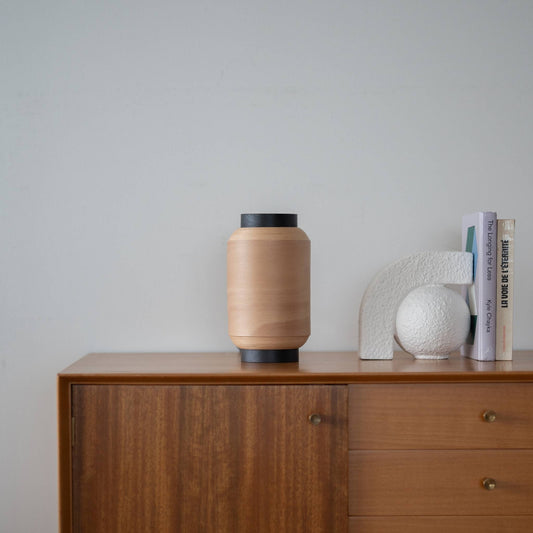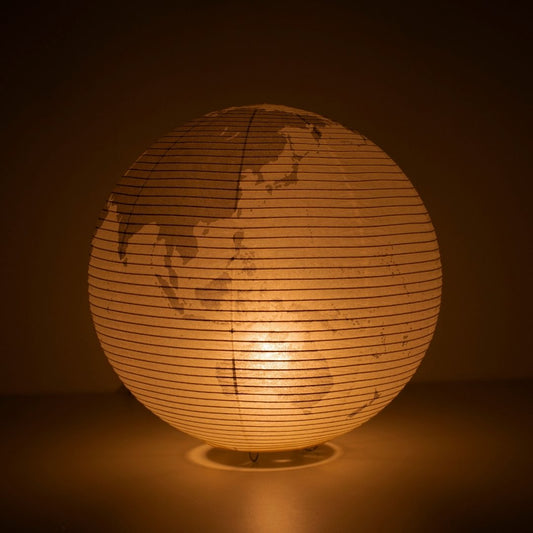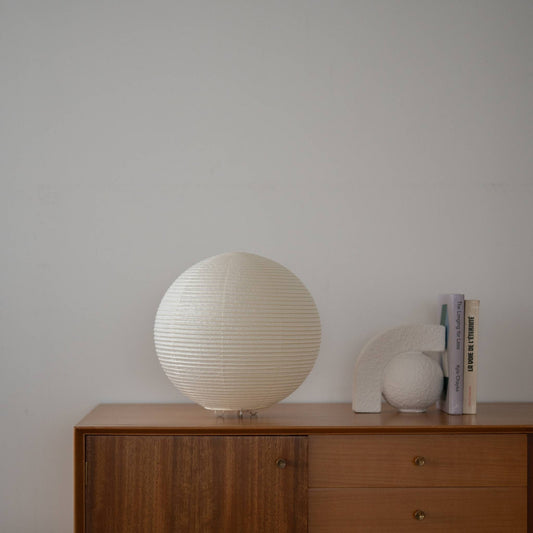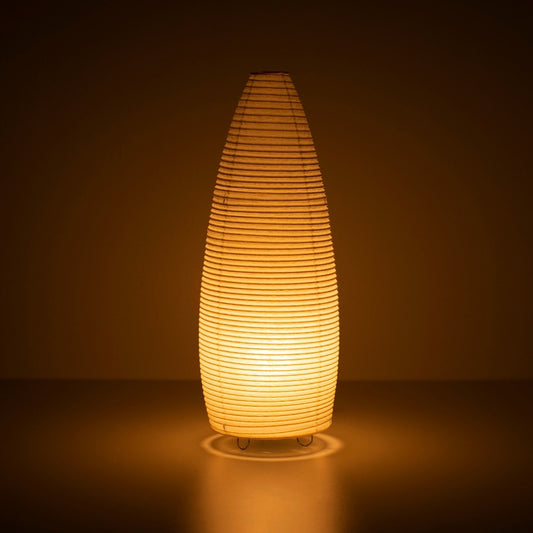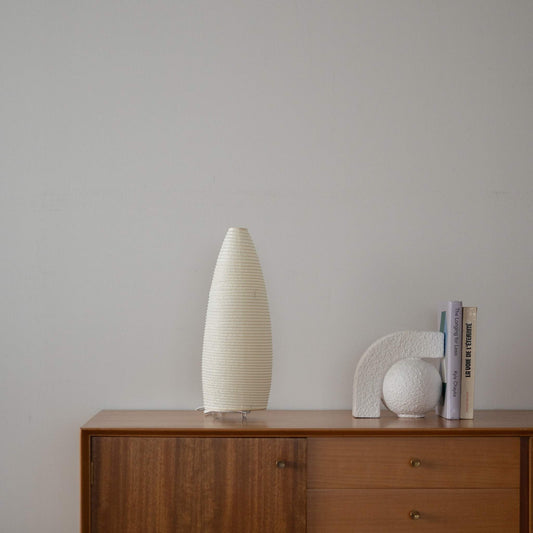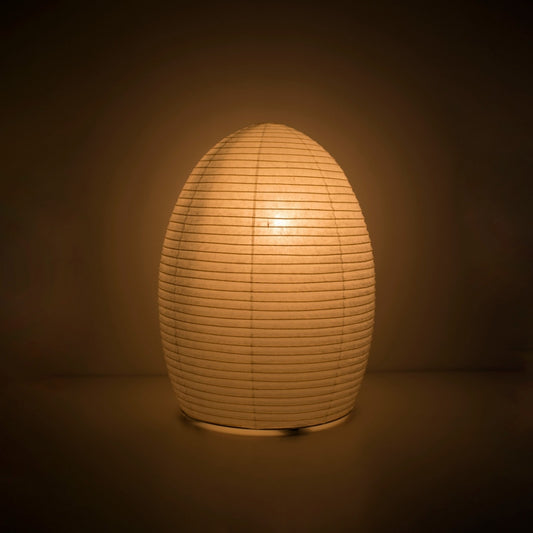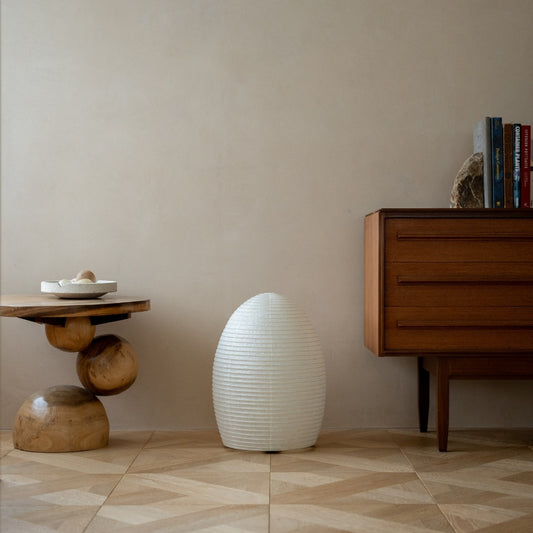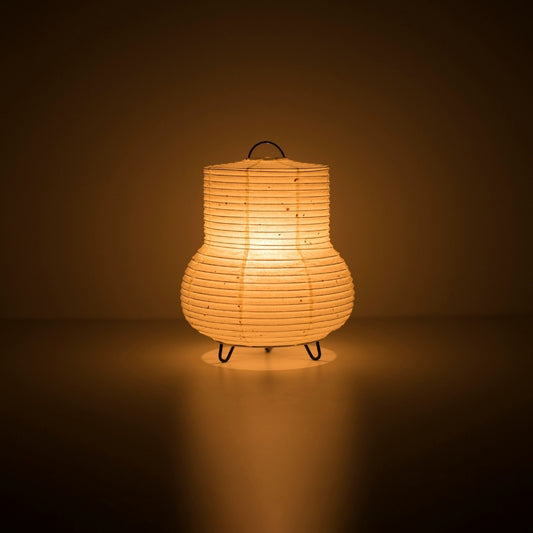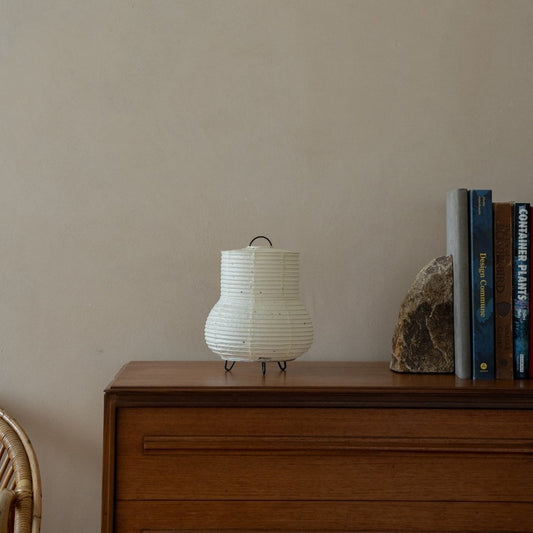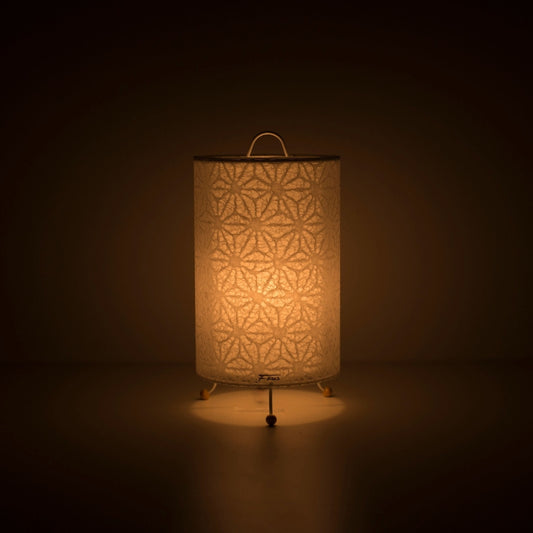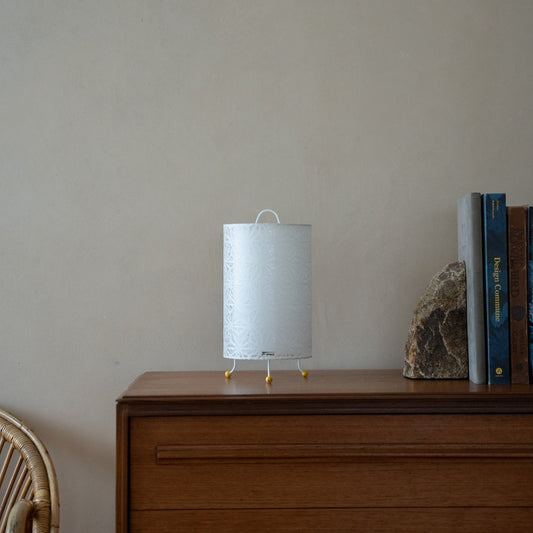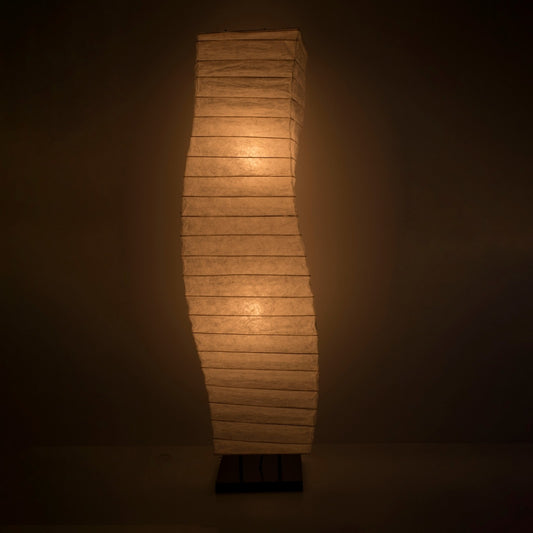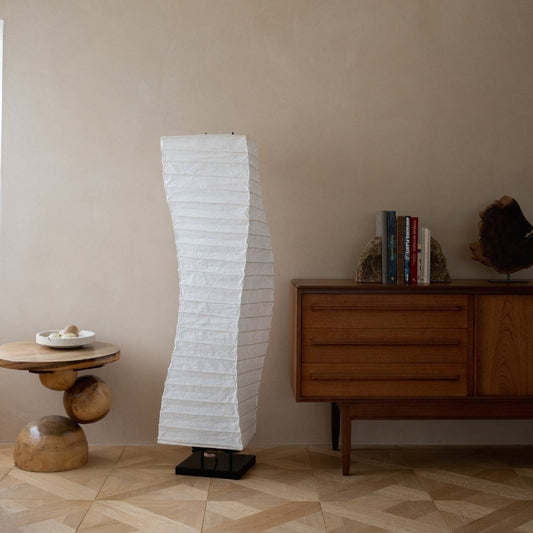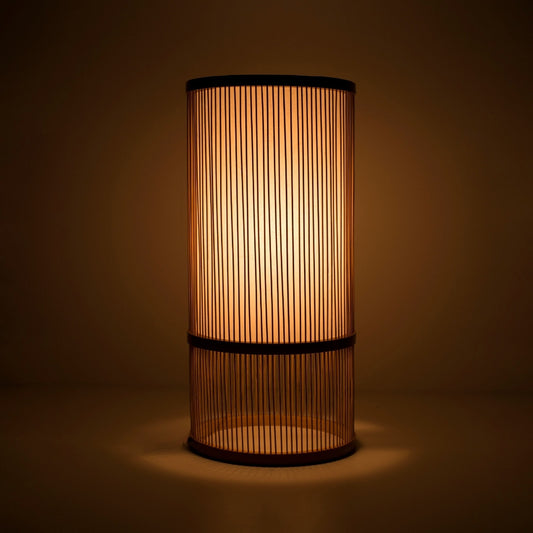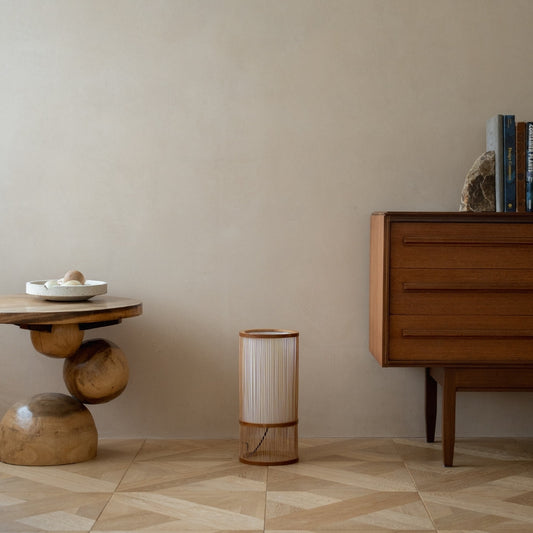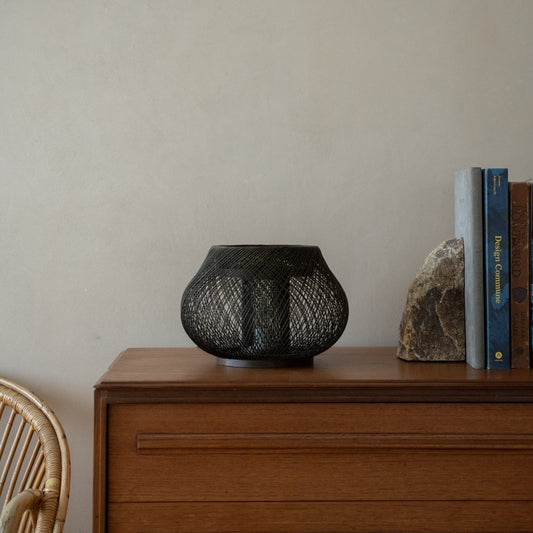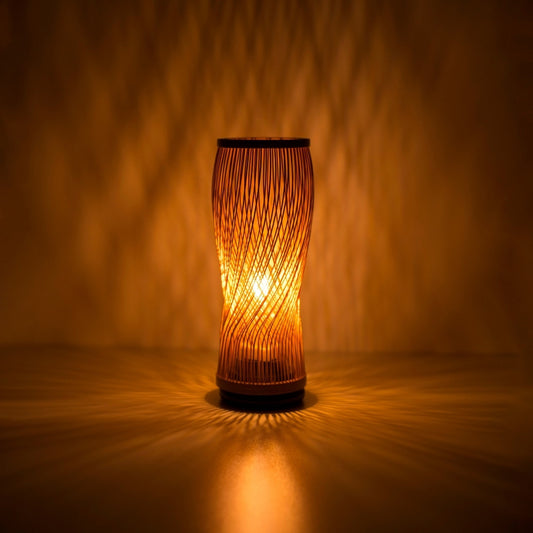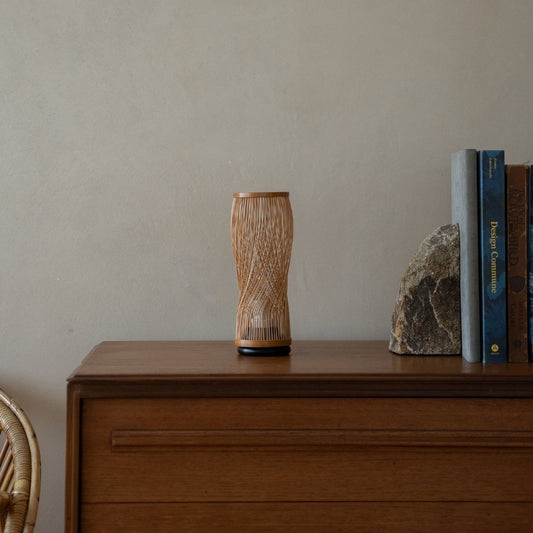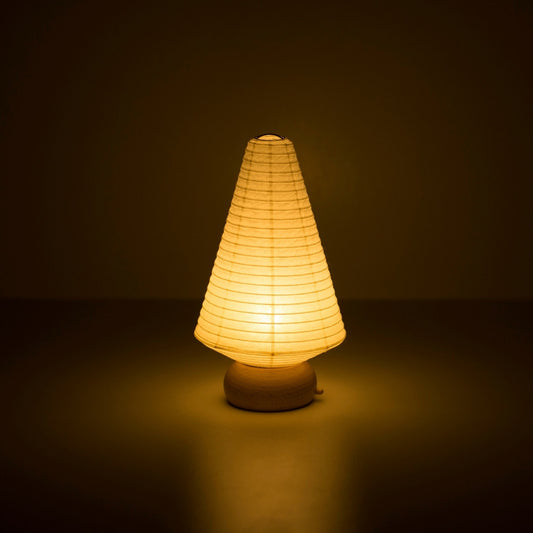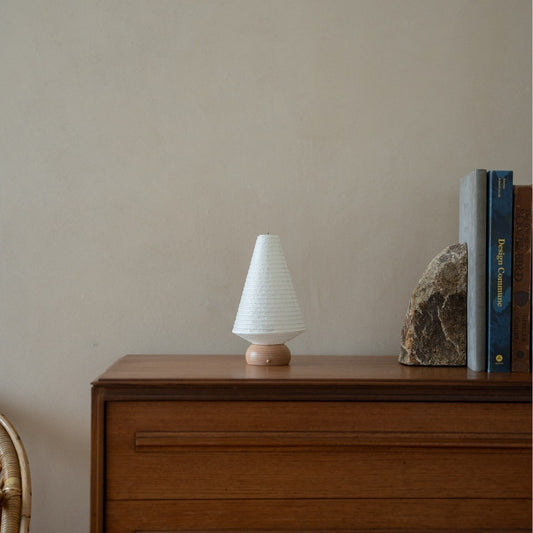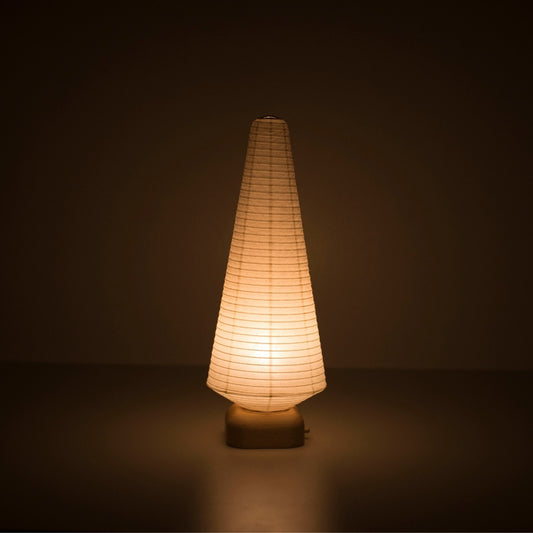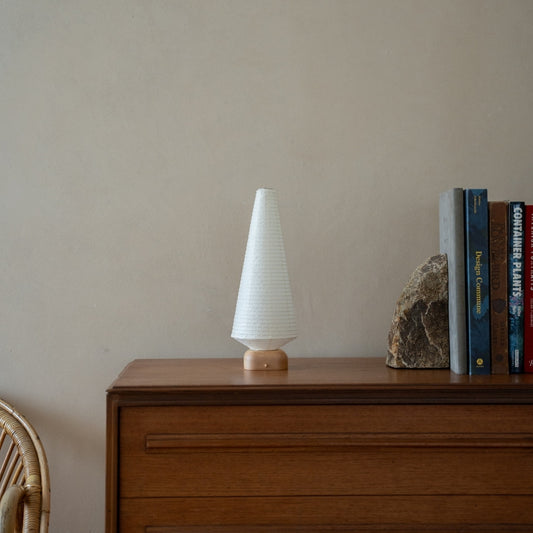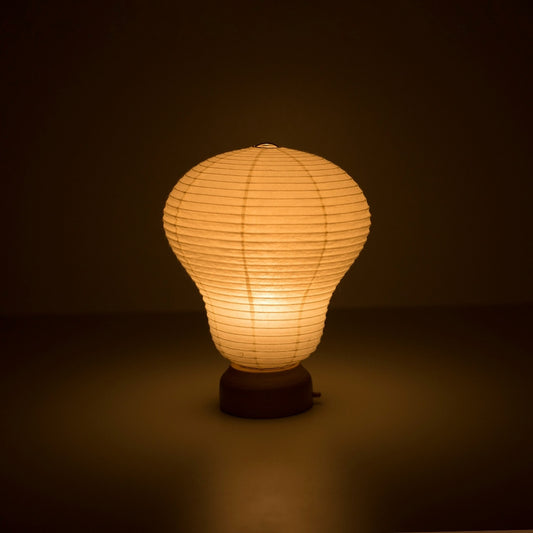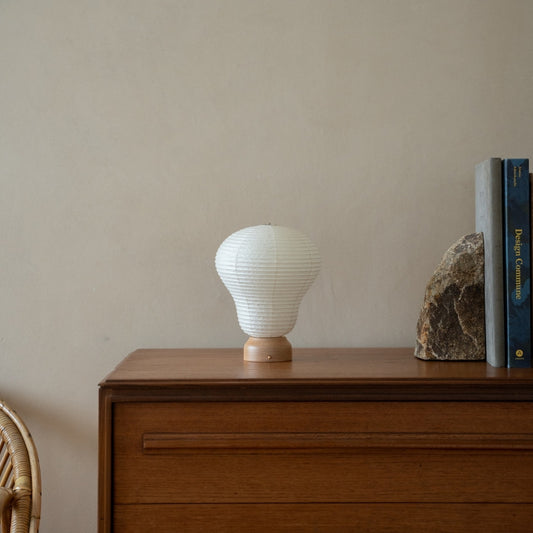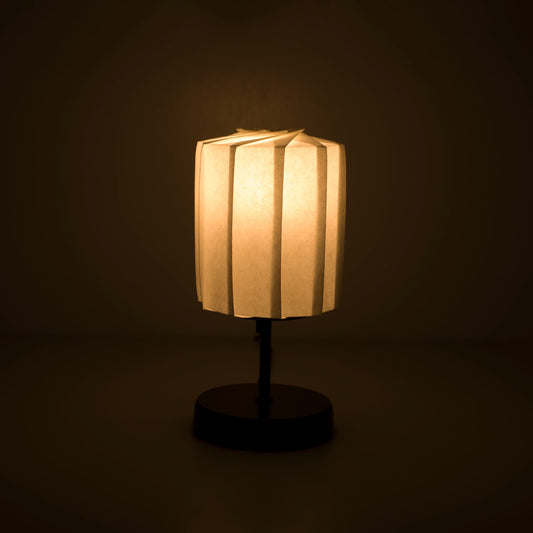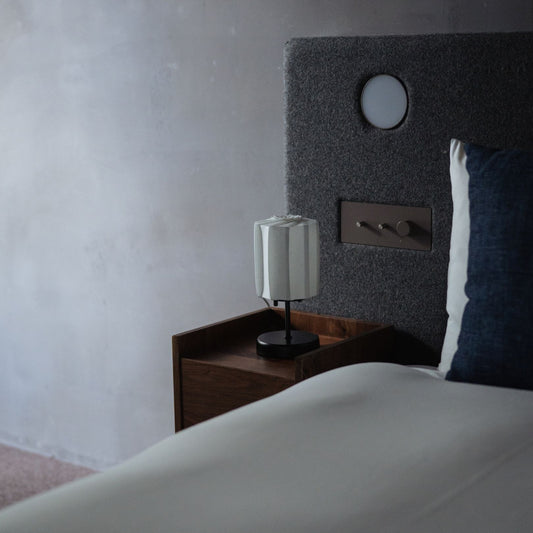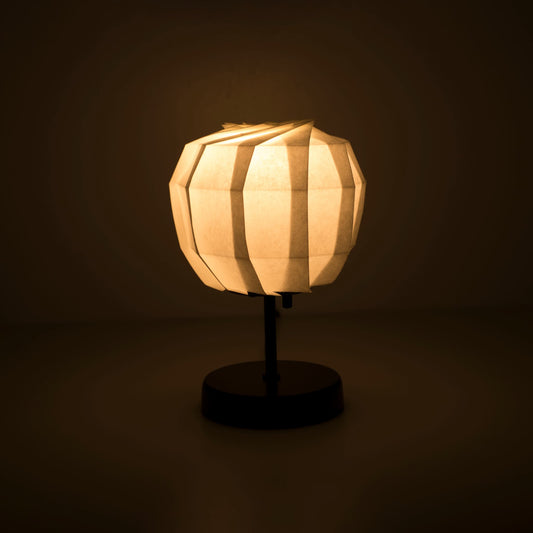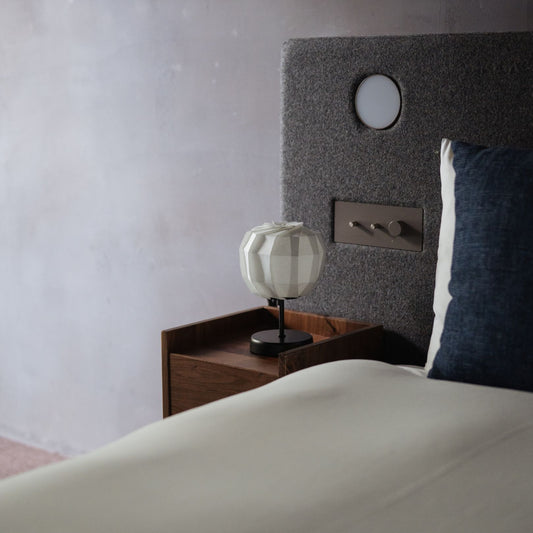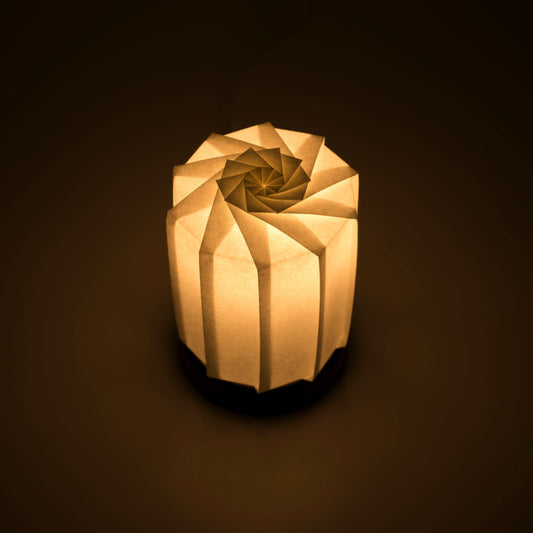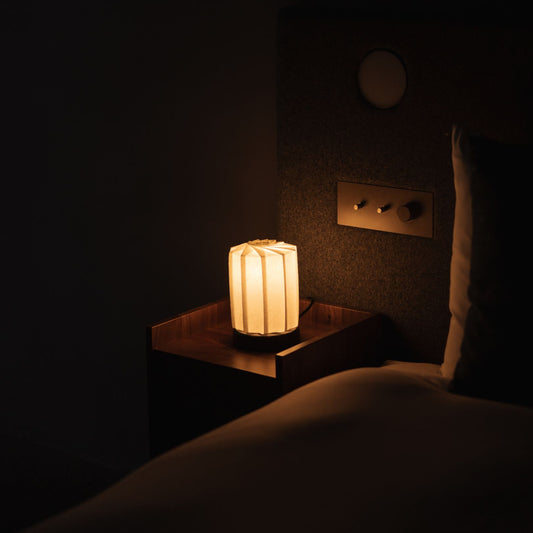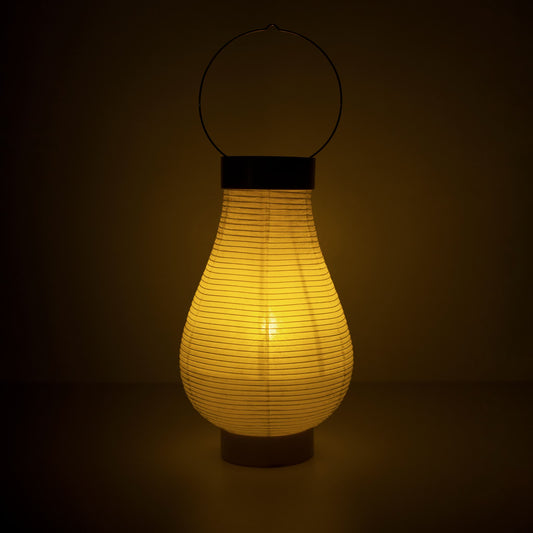Collection: Japanese Lamps, Lanterns & Lighting
-
Japanese Bamboo Floor Lamp "Moonlight"
Regular price $540.00 AUDRegular price -
Japanese Kumiko Lantern - Mini
Regular price $120.00 AUDRegular price -
Japanese Paper Floor Lamp “SLENDER”
Regular price $750.00 AUDRegular price$780.00 AUDSale price $750.00 AUDSale -
Japanese Paper Floor Lamp “PAPER STONE”
Regular price $480.00 AUDRegular price$540.00 AUDSale price $480.00 AUDSale -
Japanese Bamboo Floor Lamp "Hagoromo"
Regular price $510.00 AUDRegular price -
Japanese Bamboo Table Lamp “Star Droplet”
Regular price $210.00 AUDRegular price -
Japanese Kumiko Lantern "Asanoha" - Small
Regular price $720.00 AUDRegular price -
Japanese Paper Floor Lamp "BEANS LIGHT"
Regular price $390.00 AUDRegular price -
Japanese Kumiko Lantern "Asanoha" - Large
Regular price $1,170.00 AUDRegular price -
Japanese Paper Floor Lamp “NIPPON”
Regular price $630.00 AUDRegular price -
Japanese Paper Table Lamp "Lace Washi" Black
Regular price $220.00 AUDRegular price$240.00 AUDSale price $220.00 AUDSale -
Japanese Paper Table Lamp "Mini Circle"
Regular price $220.00 AUDRegular price$240.00 AUDSale price $220.00 AUDSale -
Japanese Paper Table Lamp “TORCHIN OVAL"
Regular price $390.00 AUDRegular price$420.00 AUDSale price $390.00 AUDSale -
Japanese Kumiko Lantern "Asanoha" - Extra Small
Regular price $510.00 AUDRegular price$570.00 AUDSale price $510.00 AUDSale -
Japanese Bamboo Table Lamp “Flower Bud”
Regular price $420.00 AUDRegular price -
Japanese Kumiko Lantern Cover
Regular price $180.00 AUDRegular price -
Japanese Bamboo Table Lamp "Koyou"
Regular price $570.00 AUDRegular price -
Japanese Paper Table Lamp "Mountain"
Regular price $270.00 AUDRegular price -
Japanese Paper Floor Lamp “TYPE G”
Regular price $560.00 AUDRegular price$620.00 AUDSale price $560.00 AUDSale -
Japanese Paper Table Lamp “RIN” 01
Regular price $150.00 AUDRegular price -
Japanese Paper Table Lamp “BEANS LIGHT” Small
Regular price $300.00 AUDRegular price -
Japanese Paper Table Lamp “TORCHIN VERTICAL"
Regular price $420.00 AUDRegular price$450.00 AUDSale price $420.00 AUDSale -
Japanese Origami Paper Table Lamp "Flower of Light" - maru S
Regular price $240.00 AUDRegular price -
Japanese Paper Floor Lamp "Chochin lamp 01"
Regular price $330.00 AUDRegular price -
Japanese Paper Table Lamp "Mini Triangle"
Regular price $240.00 AUDRegular price -
Japanese Bamboo Table Lamp "Moon Rabbit"
Regular price $210.00 AUDRegular price -
Japanese Paper Floor Lamp “NOW”
Regular price $480.00 AUDRegular price -
Japanese Bamboo Floor Lamp “Lantern of Shadow"
Regular price $360.00 AUDRegular price -
Japanese Paper Table Lamp “RIN" 04
Regular price $150.00 AUDRegular price -
Japanese Paper Floor Lamp "paper moon 02"
Regular price $260.00 AUDRegular price -
Japanese Paper Table Lamp “TORCHIN CIRCLE"
Regular price $450.00 AUDRegular price$480.00 AUDSale price $450.00 AUDSale -
Japanese Origami Paper Table Lamp "Flower of Light" - maru M
Regular price $390.00 AUDRegular price -
Japanese Paper Table Lamp “TORCHIN BELL”
Regular price $390.00 AUDRegular price$420.00 AUDSale price $390.00 AUDSale -
Japanese Paper Table Lamp “TORCHIN SQUARE”
Regular price $390.00 AUDRegular price$420.00 AUDSale price $390.00 AUDSale -
Japanese Paper Floor Lamp “NIPPON” 02
Regular price $480.00 AUDRegular price -
Japanese Origami Paper Table Lamp "Flower of Light" - tutu S
Regular price $240.00 AUDRegular price -
Japanese Paper Floor Lamp "ME-LOOK 03" White
Regular price $660.00 AUDRegular price -
Japanese Beech Table Lamp
Regular price $300.00 AUDRegular price -
Japanese Paper Floor Lamp "paper moon 13"
Regular price $540.00 AUDRegular price -
Japanese Paper Floor Lamp “PAPER STONE” Small
Regular price $360.00 AUDRegular price -
Japanese Paper Floor Lamp "Harusame Washi 01"
Regular price $900.00 AUDRegular price$930.00 AUDSale price $900.00 AUDSale -
Japanese Bamboo Floor Lamp "Ajiro-base"
Regular price $1,320.00 AUDRegular price -
Japanese Paper Table Lamp "Mini Egg"
Regular price $220.00 AUDRegular price$240.00 AUDSale price $220.00 AUDSale -
Japanese Paper Table Lamp "Mini Square"
Regular price $240.00 AUDRegular price -
Japanese Paper Table Lamp "Ostrich"
Regular price $240.00 AUDRegular price$270.00 AUDSale price $240.00 AUDSale -
Japanese Paper Table Lamp "Dinosaur"
Regular price $240.00 AUDRegular price$270.00 AUDSale price $240.00 AUDSale -
Japanese Paper Floor Lamp "ME-LOOK 01" Black
Regular price $930.00 AUDRegular price -
Japanese Paper Floor Lamp "GEMINI" 02
Regular price $600.00 AUDRegular price -
Japanese Paper Table Lamp “RIN" 03
Regular price $150.00 AUDRegular price -
Japanese Paper Floor Lamp "paper moon 04"
Regular price $270.00 AUDRegular price -
Japanese Paper Floor Lamp "Chochin lamp 03"
Regular price $330.00 AUDRegular price -
Japanese Paper Floor Lamp "Chochin lamp 02"
Regular price $330.00 AUDRegular price -
Japanese Paper Table Lamp "PAPERSON 03"
Regular price $210.00 AUDRegular price -
Japanese Paper Table Lamp "PAPERSON 01"
Regular price $210.00 AUDRegular price -
Japanese Paper Table Lamp "Lace Washi" Brown
Regular price $220.00 AUDRegular price$240.00 AUDSale price $220.00 AUDSale -
Japanese Paper Floor Lamp "Harusame Washi 02"
Regular price $930.00 AUDRegular price -
Japanese Paper Floor Lamp "Momi Washi 02"
Regular price $900.00 AUDRegular price -
Japanese Bamboo Floor Lamp "Tutu" Middle
Regular price $720.00 AUDRegular price -
Japanese Bamboo Floor Lamp "Sunlight"
Regular price $480.00 AUDRegular price -
Japanese Paper Table Lamp “AKASHI”
Regular price $300.00 AUDRegular price -
Japanese Paper Floor Lamp "ME-LOOK 03" Black
Regular price $660.00 AUDRegular price -
Japanese Paper Floor Lamp "ME-LOOK 02" Black
Regular price $600.00 AUDRegular price -
Japanese Paper Floor Lamp "ME-LOOK 02" White
Regular price $600.00 AUDRegular price -
Japanese Paper Floor Lamp "ME-LOOK 01" White
Regular price $930.00 AUDRegular price -
Japanese Paper Floor Lamp "GEMINI" 01
Regular price $600.00 AUDRegular price -
Japanese Paper Table Lamp “RIN" 05
Regular price $150.00 AUDRegular price -
Japanese Paper Table Lamp “RIN" 02
Regular price $150.00 AUDRegular price -
Japanese Beech Table Lamp "Matsuri" Chochin 02
Regular price $480.00 AUDRegular price -
Japanese Beech Table Lamp "Matsuri" Chochin 01
Regular price $480.00 AUDRegular price -
Japanese Paper Floor Lamp "paper moon 05G"
Regular price $350.00 AUDRegular price -
Japanese Paper Floor Lamp "paper moon 05"
Regular price $260.00 AUDRegular price -
Japanese Paper Floor Lamp "paper moon 03"
Regular price $240.00 AUDRegular price -
Japanese Paper Floor Lamp "paper moon 01"
Regular price $240.00 AUDRegular price -
Japanese Paper Floor Lamp "paper moon 11"
Regular price $510.00 AUDRegular price -
Japanese Paper Table Lamp "PAPERSON 02"
Regular price $210.00 AUDRegular price -
Japanese Paper Table Lamp "Lace Washi" White
Regular price $220.00 AUDRegular price$240.00 AUDSale price $220.00 AUDSale -
Japanese Paper Floor Lamp "Momi Washi 01"
Regular price $900.00 AUDRegular price -
Japanese Bamboo Floor Lamp "Tutu" Small
Regular price $480.00 AUDRegular price -
Japanese Bamboo Table Lamp "Kisaragi"
Regular price $720.00 AUDRegular price -
Japanese Bamboo Table Lamp “Single Bloom”
Regular price $450.00 AUDRegular price -
Japanese Paper Table Lamp "Mini Tree"
Regular price $240.00 AUDRegular price$270.00 AUDSale price $240.00 AUDSale -
Japanese Paper Table Lamp "Tree"
Regular price $270.00 AUDRegular price$300.00 AUDSale price $270.00 AUDSale -
Japanese Paper Table Lamp "Balloon"
Regular price $240.00 AUDRegular price$270.00 AUDSale price $240.00 AUDSale -
Japanese Origami Paper Table Lamp "Flower of Light" - tutu (with Stand)
Regular price $450.00 AUDRegular price -
Japanese Origami Paper Table Lamp "Flower of Light" - maru (with Stand)
Regular price $450.00 AUDRegular price -
Japanese Origami Paper Table Lamp "Flower of Light" - tutu M
Regular price $390.00 AUDRegular price -
Japanese Paper Table Lamp “TSUDOI”
Regular price $360.00 AUDRegular price
Recently Viewed Products
More to Explore
-
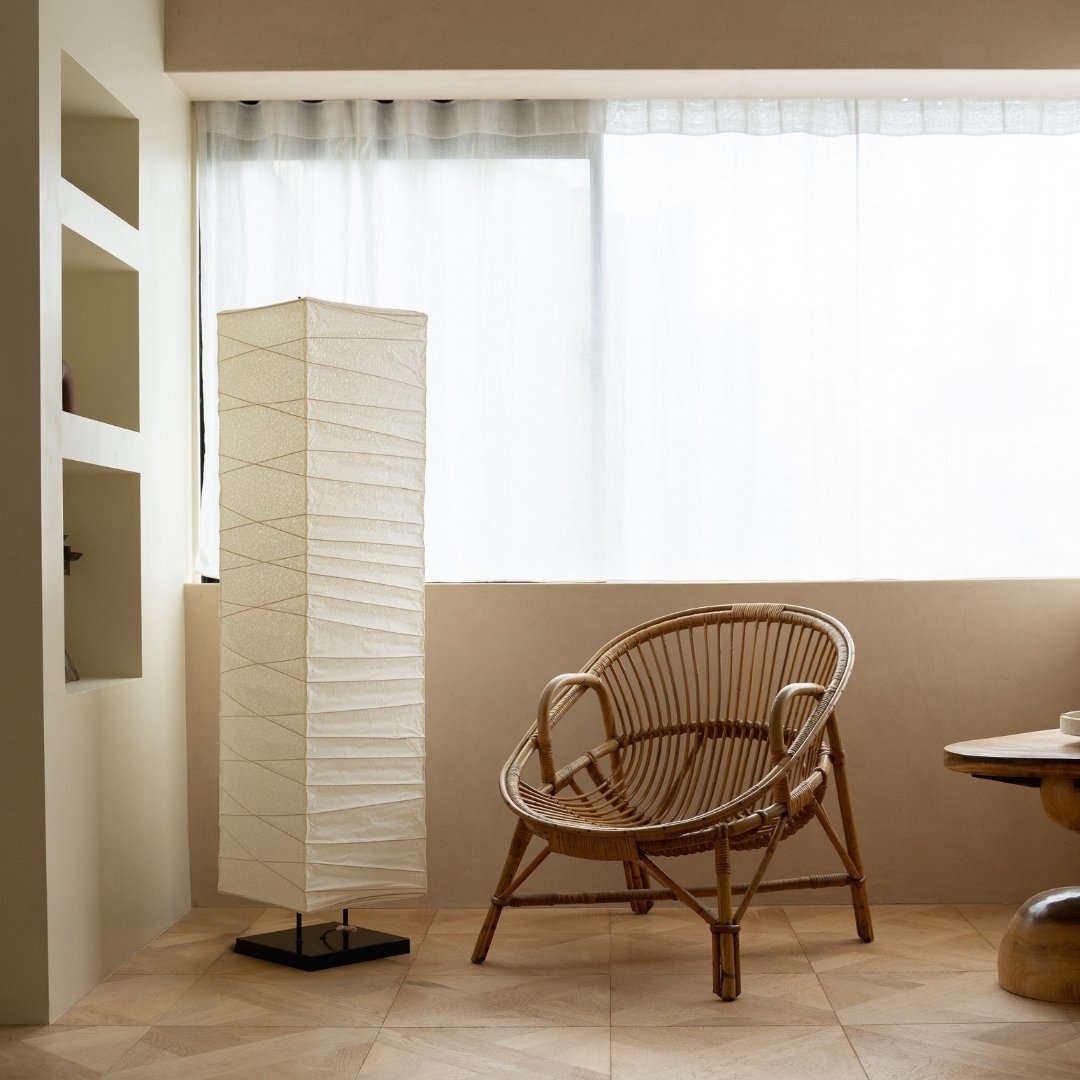
Floor Lamps
Floor Lamps Millennium Gallery Japan's floor lamp collection invites you to experience...
-
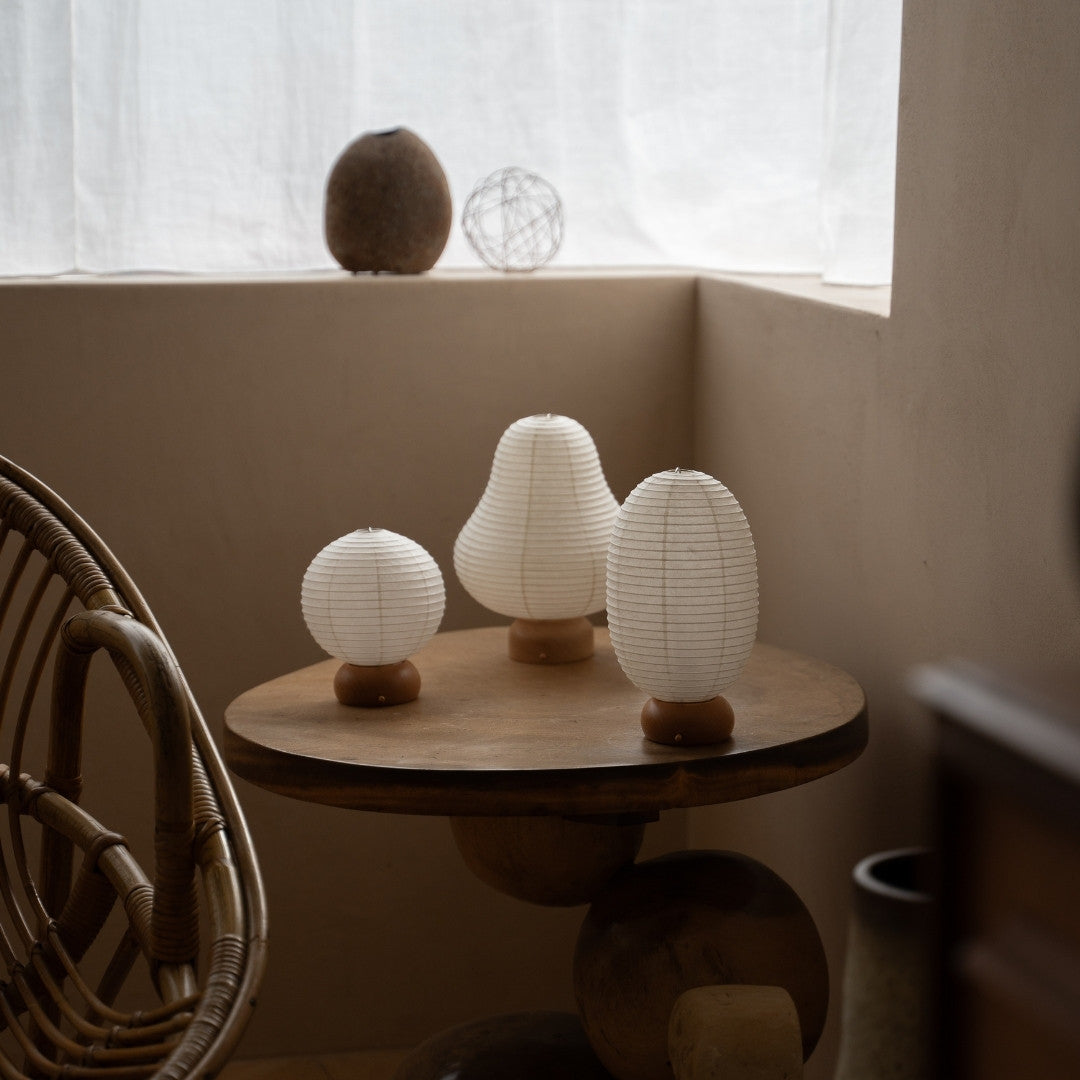
Table Lamps
Table Lamps Millennium Gallery Japan's table lamp collection invites you to embrace...
-
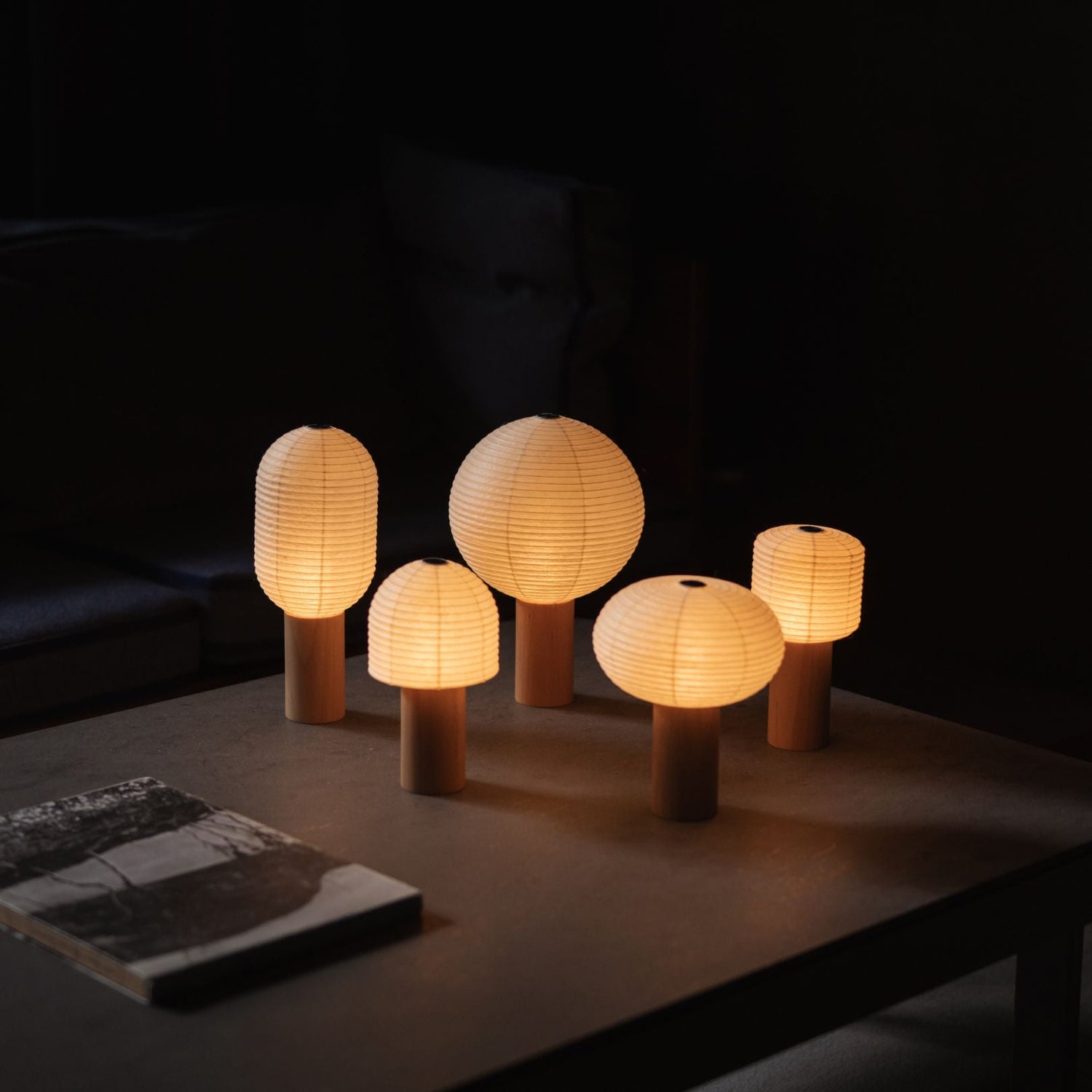
Paper Lamps
Paper Lamps Collection Paper Lamps The Paper Lamp Collection by Millennium Gallery...
-
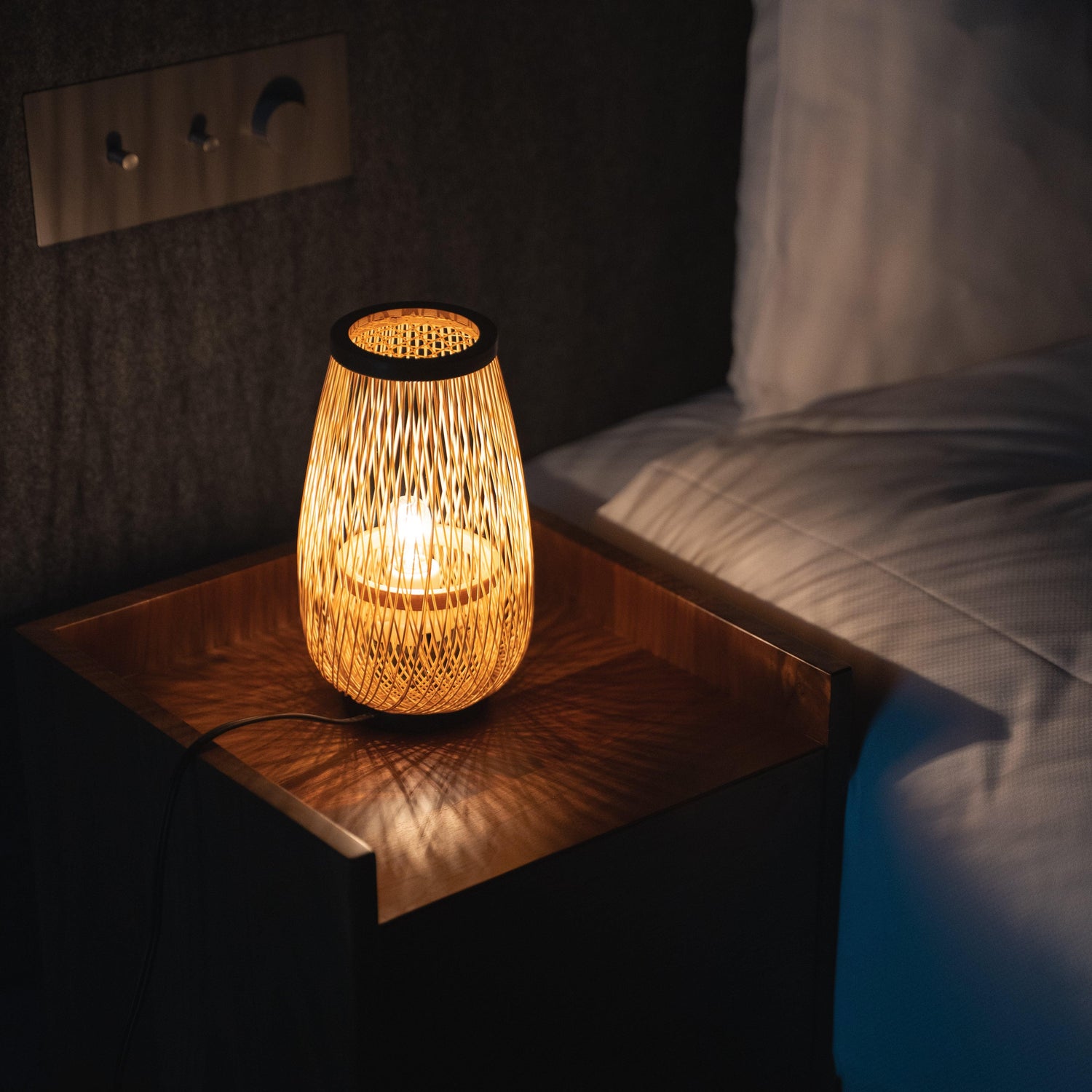
Bamboo Lamps
Bamboo Floor Lamps & Table Lamps Bamboo Lamps The Bamboo Lamp Collection by Millennium...
-

Kumiko Lamps
Kumiko Lamps Kumiko Lamps The Kumiko Lamp Collection by Millennium Gallery Japan embodies the...
-
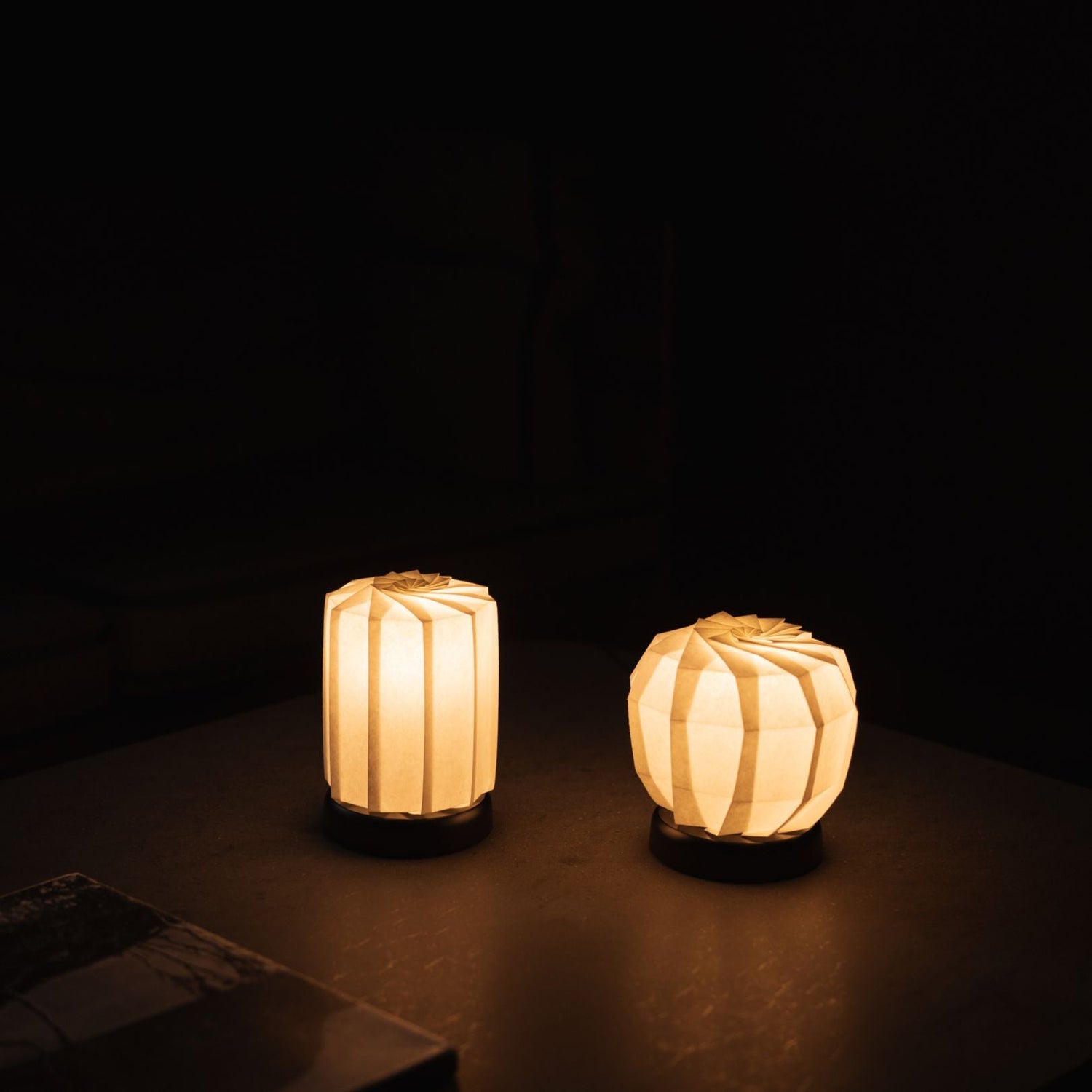
Origami Lamps
Origami Lamps The Origami Lamp Collection by Millennium Gallery Japan reimagines the...
Japanese Lamps, Lanterns, and Lighting: Enhancing Australian Homes with Natural Elegance
Traditional Japanese lighting fixtures, including andon (stationary paper-covered lamps), bonbori (small, standing paper lanterns), chōchin (collapsible paper lanterns), and tōrō (stone or metal garden lanterns), offer a unique blend of functionality and serene beauty. Among these, chōchin made from Washi paper have gained global recognition for their simple yet soft aesthetic, profoundly influencing renowned sculptor Isamu Noguchi and his world-famous "AKARI" light sculpture series. Even today, the "AKARI" series is meticulously crafted by artisans in Gifu Prefecture using time-honored chōchin-making techniques, embodying a commitment to authenticity and sustainability.
Japan also boasts a rich variety of unique lamps and lanterns that seamlessly fuse traditional techniques with modern design, such as bamboo floor lamps and bedside lamps employing intricate origami techniques. Millennium Gallery Japan offers a curated selection of rare, small-batch lighting pieces perfect for the discerning Australian home. This includes floor lamps handmade by bamboo artisans with an 800-year history, table lamps and andon featuring "Kumiko-zaiku"—a woodworking technique with a 1400-year history that assembles hundreds of small wooden pieces without nails—and unique Japanese floor lanterns born from the same Gifu chōchin tradition as Isamu Noguchi's "AKARI." Discover the perfect piece for your taste from our collection of Japanese lamps and lanterns, imbued with centuries of craftsmanship and designed to bring a sense of history, natural beauty, and a refined aesthetic to your space.
The Japanese Lighting Culture of Light and Shadow: A Connection to Nature and Wellness
Japanese lighting culture emphasizes the harmony of light and shadow, fostering a unique aesthetic sensibility that promotes a connection to nature and overall wellness. Since ancient times, the Japanese have possessed a sensitivity to find beauty not only in bright light but also within shadows. For example, traditional Japanese architecture, such as gardens and tea rooms, masterfully incorporates natural light to create delicate expressions woven by light and shadow, blurring the lines between indoor and outdoor spaces. Even today, visiting old temples and tea rooms in Kyoto or Nara, one can feel profound tranquility and calmness in the dim, contemplative light, even during the day. Decorations like paintings on sliding doors (fusuma-e) and folding screens (byōbu) can also be enjoyed for their ever-changing expressions influenced by the play of light.
This art of light and shadow has been thoughtfully inherited by contemporary interior lighting. Japanese lamps and lanterns using Washi paper and woodworking techniques produce a soft, diffused light and delicate shadows, bringing warmth and serenity to any space. The technique of diffusing light by covering the light source with Washi paper, as seen in shōji screens and andon lamps, has long been cherished by the Japanese for its ability to create peaceful environments that encourage reflection. As depicted in Junichiro Tanizaki's "In Praise of Shadows," traditional Japanese houses maximized limited light sources and effectively utilized shadows to create a unique beauty. Even in modern society, the harmony of light and shadow, so valued by the Japanese, is being rediscovered as a new charm by those in Australia seeking peace, tranquility, and a deeper connection to their natural surroundings within their homes.
Why Choose Japanese Lamps and Lanterns for Your Australian Home?
1. Unique Style & Versatile Design for Modern Australian Living
Japanese lamps and lanterns are celebrated for their minimalist yet diverse designs, seamlessly blending with various interior styles including modern, traditional, and the increasingly popular Japandi style, biophilic design, and organic modernism. Characterized by timeless simplicity, they often feature natural, sustainable materials like Washi paper, bamboo, and cedarwood, creating an understated elegance that complements any space. The "AKARI" series, designed by Isamu Noguchi and inspired by traditional Japanese chōchin, perfectly illustrates how Japanese lamps and lanterns merge heritage with contemporary design, offering a sophisticated touch that resonates with Australian aesthetics.
2. Exceptional Quality & Sustainable Craftsmanship (Authenticity Guaranteed)
The meticulous craftsmanship behind Japanese lamps and lanterns reflects centuries of tradition and a strong commitment to sustainability. Each piece is crafted from natural materials such as handmade Washi paper and sustainably sourced wood, ensuring both durability and aesthetic appeal. Often handcrafted by skilled artisans, these lights guarantee exceptional quality and authenticity through techniques passed down through generations. Incorporating LED-compatible designs, they modernize functionality while retaining their timeless beauty, offering a long-lasting and eco-conscious choice for your home.
3. Rare & Collectible Designs with Unique Provenance
Owning a Japanese lamp or lantern means acquiring a rare, limited-production item embodying tradition and artistry. For instance, Kumiko lamps and Kumiko andon, created by fitting wooden pieces together without nails, are produced in small quantities, reflecting their rarity and the incredible skill involved. Similarly, pieces like the "Gekkō" (Moonlight) bamboo Japanese lamps, handcrafted by artisans in Shizuoka, are deeply rooted in history, each carrying a unique story of dedication and provenance. These are not just lighting fixtures but treasured artifacts that bring warmth, sophistication, and the spirit of Japanese tradition to your space, offering a unique connection to cultural heritage and a valuable addition to any collection.
4. Low-Profile Floor Lamps and Lanterns for Relaxed, Flowing Spaces
Low-profile floor Japanese lamps and lanterns are a hallmark of Japanese lighting, perfect for creating calming and expansive environments that connect seamlessly with Australian indoor-outdoor living. Skillfully designed to diffuse soft light near the floor, they create a serene atmosphere, making rooms feel more spacious and tranquil. Ideal for living rooms, bedrooms, and hallways, they provide indirect lighting that enhances relaxation. Bamboo floor lamps and Washi paper floor lanterns (like andon) add a natural touch to interiors while creating a delicate interplay of light and shadow, fostering a peaceful ambiance that encourages unwinding.
5. Small Table Lamps & Lanterns: Perfect Accents for Enhanced Living
Japanese table lamps and tabletop lanterns (such as andon or small chōchin) excel at merging functionality with beauty, bringing refined accents to everyday moments. Crafted with meticulous care, these lights serve as bedside illumination, reading lamps, or decorative accents on console tables and shelves. Their warm, diffused light creates a tranquil environment perfect for unwinding and reflection. Popular choices include Kumiko table lamps featuring intricate geometric woodworking and origami-inspired lamps that add an artistic touch and a sense of calm to any space.
Japanese Lamps & Lanterns: Illuminate Your Australian Home with Tranquility and Authentic Craftsmanship
For those seeking a Noguchi Lamp alternative:
Discover an alternative that resonates deeply with Isamu Noguchi's aesthetic and complements the sophisticated Australian home. These refined designs harmonize beautifully with mid-century modern interiors, minimalist aesthetics, and the popular Japandi style. More than just lighting, these paper lamps and lanterns, a fusion of Japanese traditional techniques and contemporary sensibility, are art pieces that elevate your space and promote a sense of well-being. Unique forms, handcrafted by artisans using traditional Washi paper and bamboo, diffuse a soft light, creating a refined atmosphere akin to an art gallery and a focal point for any room.
For those seeking minimalist lamps & lanterns:
If you appreciate minimalist design that prioritizes serenity, natural materials, and functional aesthetics, consider these refined options. Crafted by Japanese artisans, these lamps and lanterns maintain a minimalist aesthetic while adding warmth and a touch of understated luxury. The natural textures of Washi paper and bamboo bring a sense of calm and a connection to nature to everyday spaces, aligning perfectly with biophilic design principles. Their simple yet impactful designs ensure they will be cherished for years. The warm, soft light soothes the mind and provides a relaxing atmosphere, perfect for fostering mindfulness. Their sophisticated, detail-oriented designs blend seamlessly into any interior. The high durability characteristic of traditional craftsmanship promises lasting quality and enjoyment, reflecting a commitment to sustainable and authentic living.
For those with roots in Japan or Asia:
The refined light and design born from Japanese traditional crafts create a space of deep serenity and cultural connection. For those who love Japanese traditional culture or East Asian cultures, Japanese lamps and lanterns using Washi paper and bamboo add a special sense of "roots" and heritage to your space. These excellent pieces, where minimalist design meets traditional techniques, also blend seamlessly with modern Australian interiors. The soft, diffused light alleviates daily stress and nurtures a sense of calm, providing a comforting link to cultural identity and a sense of belonging.
For those seeking paper lamps & lanterns:
Indulge in the delicate beauty and essence of Japanese Washi paper. For those drawn to the unique texture of Washi, Japanese paper lamps and paper lanterns offer the delicate and elegant quality unique to Washi, enveloping your space in soft, diffused light. Their natural materials and simple forms beautifully harmonize with any interior, adding warmth and a sense of organic tranquility to daily life, and promoting a soothing atmosphere.
How Our Australian Customers Enjoy Their Lamps & Lanterns
Timeless Design with Artistic Appeal
Our customers frequently praise the unique design of Japanese lamps and lanterns, describing them as more than just lighting—they are works of art. Reviews highlight how these lamps elevate interiors, with comments like:
- “Its presence is like art, making my living room more sophisticated.”
- “The delicate bamboo stripes and the beautiful way it emits light are impressive.”
The harmonious blend of minimalist aesthetics and traditional craftsmanship allows these lamps and lanterns to complement both modern and classic spaces, effortlessly enhancing any décor.
Soft, Soothing Light for Relaxation
Many users rave about the calming effect of Japanese lamps and lanterns, noting how their warm glow fosters a serene atmosphere. Common sentiments include:
- “The warm light creates a relaxing space.”
- “It’s perfect for unwinding in the bedroom.”
Washi paper lamps, in particular, diffuse light beautifully, reducing glare and enveloping the room in a gentle ambiance. Customers frequently recommend them for reading or as elegant indirect lighting.
Transforming Spaces with Ambiance
Japanese lamps and lanterns are often praised for their ability to transform an entire room’s mood. Reviews highlight how these lamps create a warm and tranquil retreat:
- “This lamp alone changed the atmosphere of the entire room.”
- “It feels like a traditional Japanese inn.”
The interplay of bamboo and washi paper casts mesmerizing shadows, adding an artistic dimension to any space. Even when unlit, these lamps command attention, with customers noting:
- “It has a presence even when turned off, and my friends always compliment it.”
These testimonials underscore how Japanese lamps seamlessly blend beauty and functionality, elevating homes with their distinctive charm.
Explore Japanese Lamps & Lanterns for Your Australian Home
Japanese lamps and lanterns seamlessly blend traditional craftsmanship with contemporary aesthetics, creating an atmosphere of warmth, tranquility, and timeless beauty. From delicate Washi paper room lamps and lanterns to intricate Kumiko-zaiku lamps and the natural elegance of bamboo lighting, our curated collection offers a variety of styles, materials, and functionalities to suit any space in your Australian home.
Shop by Style
- Table Lamps: Whether used as bedside lighting, reading lamps, or decorative accents in your living room, Japanese table lamps and lanterns bring understated elegance and a sense of calm to any space. Designs range from origami-inspired shapes to Kumiko woodworking craftsmanship, offering the perfect balance of functionality and artistry.
- Floor Lamps: Designed to create softly ambient lighting while adding a sculptural presence to your room, Japanese floor lamps and lanterns are often crafted from bamboo or Washi paper, casting delicate shadows and fostering a relaxing atmosphere. Ideal for living rooms, bedrooms, and entryways, these lamps enhance your décor with their unique designs and warm, inviting glow, seamlessly connecting indoor spaces.
Shop by Material
- Paper Lamps: Washi paper lamps are a hallmark of Japanese lighting design, offering a soft, diffused light that transforms any space into a sanctuary. Crafted with traditional techniques, these lamps are perfect for bedrooms and meditation spaces, as they minimize glare and enhance relaxation and a sense of well-being.
- Bamboo Lamps: Sustainable and stunning, Japanese bamboo lamps feature intricately woven bamboo patterns that create mesmerizing light and shadow effects. Their natural texture and craftsmanship make them a statement piece that seamlessly blends with Japandi or modern interiors, bringing an organic, calming element and a connection to nature.
- Kumiko Lamps: Employing woodworking techniques passed down for 1,400 years, Kumiko lamps are assembled without nails, showcasing exquisite geometric patterns. Each piece is a work of art handcrafted with precision, adding a touch of sophistication, warmth, and authentic craftsmanship to living rooms, offices, or bedrooms.
- Origami Lamps: Inspired by the Japanese art of origami, origami lamps bring a sculptural and artistic element to lighting. Their intricate shapes cast unique shadows, making them perfect for bedside tables, reading corners, and modern interiors seeking a touch of Japanese craftsmanship and playful elegance.
Shop by Room
- Living Room Lamps: Enhance the heart of your home with warm and inviting light from Japanese living room lamps. Whether it's a low-profile paper floor lamp for a cozy atmosphere or a bamboo statement piece highlighting traditional craftsmanship, our selection allows you to create a harmonious and elegant space that promotes relaxation and a flow between spaces.
- Bedroom Lamps: Create a calming and restful ambiance with softly diffused lighting from our selection of dimmable bedside lamps and touch lamps. Japanese bedroom lamps are designed to promote relaxation, wellness, and comfort, ensuring a serene environment for a good night's sleep.
- Entryway & Hallway Lamps: Make a stylish first impression with compact and decorative lamps that add warmth and inviting light to smaller spaces, welcoming guests with subtle elegance and natural charm.
Shop by Feature
- Portable & Cordless Lamps: Ideal for modern Australian lifestyles, our portable Japanese lamps offer convenience without compromising on aesthetics. With rechargeable designs and lightweight materials, they can be effortlessly moved from bedrooms to living areas, and even outdoors for a serene ambiance under the stars, offering flexible lighting solutions for both indoor and outdoor enjoyment.
- Dimmable & Touch Lamps: For customizable lighting, our dimmable and touch-sensitive lamps provide adjustable brightness to suit your needs. Whether for reading, relaxation, or a subtle nighttime glow, these lamps enhance your space with effortless functionality and quiet elegance, allowing you to create the perfect mood.
Find the Perfect Japanese Lamp and Lanterns for You
Japanese lamps and lanterns are more than just lighting fixtures; they are an expression of artistry, tradition, and tranquility. Crafted from natural, sustainable materials like Washi paper, bamboo, and wood, these lights bring warmth, elegance, and a sense of calm to any space. Whether you're looking for a statement piece or a subtle accent to enhance your mindful and design-conscious Australian home, discover the perfect Japanese lamp or lantern to suit your style and foster a deeper connection to nature.
Japanese Lamps and Lanterns by Style
- Paper Lamps - Featuring a soft, diffused light, Washi paper lamps create a calming ambiance, perfect for bedrooms and relaxation spaces, promoting a sense of peace and wellness.
- Bamboo Lamps - Handcrafted with delicately woven bamboo, these lamps cast mesmerizing shadows, adding an organic beauty and a strong connection to nature to your space.
- Kumiko Lamps - Made using woodworking techniques dating back 1,400 years, these lamps showcase intricate geometric patterns, functioning as both art and illumination and representing authentic craftsmanship.
- Origami Lamps - Inspired by the Japanese tradition of origami, these sculptural lamps add a modern, artistic touch to any room, offering unique visual interest and a nod to Japanese artistry.
Lamps and Lanterns for Every Room
- Living Room Lamps - Elevate your space with floor and table lamps that provide a warm, inviting glow, perfect for relaxing or entertaining guests in a tranquil setting that promotes indoor-outdoor flow.
- Bedroom Lamps - Create a serene and cozy atmosphere with softly diffused lighting from our selection of dimmable bedside lamps and touch lamps, designed for ultimate relaxation and a peaceful night's sleep.
- Entryway & Hallway Lamps - Make a stylish first impression with compact and decorative lamps that add warmth and welcoming light to smaller spaces, infusing them with natural elegance.
Caring for Your Japanese Lamps & Lanterns
To maintain the beauty and longevity of your Japanese lamp, follow these simple care tips:
- Avoid direct sunlight: Prolonged exposure to strong sunlight can cause fading and deterioration of delicate materials like Washi paper and wood.
- Avoid moisture: Keep your lamp in a dry environment, as humidity can affect bamboo and wooden components, preserving its quality and ensuring its longevity.
- Dust gently: Clean your lamp with a soft cloth or feather duster, avoiding harsh chemicals that could damage the delicate surfaces.
Experience the elegance of Japanese lighting. With their timeless designs and soothing glow, Japanese lamps and lanterns bring harmony, warmth, and tranquility to any Australian home. Explore our curated collection to find the perfect piece to illuminate your space with beauty, authentic tradition, and a lasting connection to nature.

